The Bravia 8 is Sony’s flagship OLED model for 2024, aimed at attracting image quality enthusiasts. This television delivers outstanding picture quality with OLED’s hallmark deep blacks, vivid, precise colours, and infinite contrast, creating a highly realistic viewing experience. Dark scenes are presented with perfect black levels, while brighter elements are rendered with impressive detail, giving each frame a distinctive cinematic feel. With a 120 Hz refresh rate, the Bravia 8 ensures excellent motion fluidity, making it ideal for sports, gaming, and fast-paced movie scenes. Its ability to provide a ghost-free image allows viewers to appreciate fine details even during rapid action sequences, a feature that will particularly appeal to fans of dynamic content. Running on the Google TV platform, the Bravia 8 offers an intuitive, fast, and user-friendly interface. This system provides seamless access to popular applications and favourite content. The clear and responsive interface enhances the viewing experience, making navigation smooth and straightforward. The practical, backlit remote control adds further convenience and can be charged via USB-C, distinguishing it from traditional battery-powered remotes. This thoughtful design ensures easy use, even in low-light conditions. However, despite its strengths, the Bravia 8 does have some limitations. With an SDR brightness level of 330 nits, it may not perform optimally in very bright rooms, potentially leading to reflections or a less vivid display in strong ambient light. Users who valued the superior gradation in earlier Sony models may find this a minor drawback. Additionally, the television features only two HDMI 2.1 ports, which could be limiting for gamers who use multiple consoles or other high-bandwidth devices. Overall, the Sony Bravia 8 is a premium OLED television that excels in most areas. Its superb picture quality, advanced gaming features, and solid sound performance make it an excellent choice for a reliable OLED model in 2024. While there are some areas for improvement, particularly in SDR brightness and connectivity, the Bravia 8’s overall performance and features make it a compelling option for both everyday use and immersive viewing experiences.
- Matching (Score)
- Our verdict
- TV appearance
- Where to buy
- Contrast and black detail
- HDR effect quality
- Factory color reproduction
- Color reproduction after calibration
- Smoothness of tonal transitions
- Image scaling and smoothness of tonal transitions
- Blur and motion smoothness
- Console compatibility and gaming features
- Input lag
- Compatibility with PC
- Viewing angles
- TV efficiency during daytime
- Details about the matrix
- TV features
- Apps
- Playing files from USB
- Sound
Sony Bravia 8 (XR80) vs Samsung QN85F
Direct compare
Check the best price offer:
Sony Bravia 8 (XR80)BRAVIA 8 / XR80
QN85F

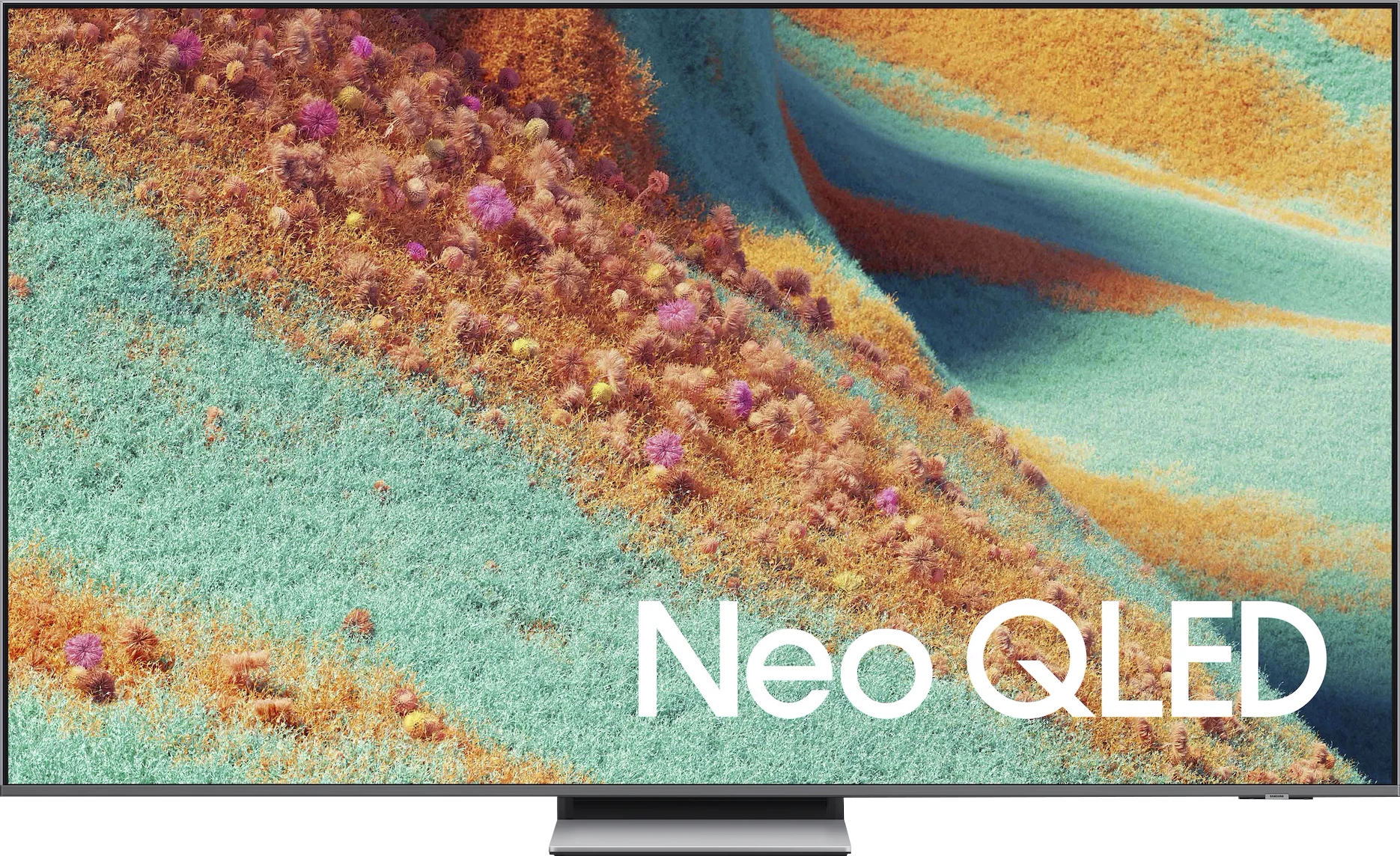
Panel type: WRGB OLED
Resolution: 3840x2160
System: Google TV
Model year: 2024
Complete the survey to find out the result

Panel type: LCD VA
Resolution: 3840x2160
System: Tizen
Model year: 2025
Complete the survey to find out the result

Overall rating
7.8
7.6
Movies and series in UHD quality
7.6
7.5
Classic TV, YouTube
8.0
7.2
Sports broadcasts (TV and apps)
8.1
7.0
Gaming on console
8.8
8.7
TV as a computer monitor
7.6
8.4
Watching in bright light
5.6
6.9
Utility functions
9.4
7.3
Apps
9.6
8.7
Sound quality
7.5
7.6
Complete the survey to find out what fits your preferences
Advantages
Excellent contrast
Google TV – intuitive system, easy access to applications, backlit remote.
Very good motion smoothness – 120 Hz, advanced smoothing system.
Great Dolby Vision support
Very good viewing angles
Superb built-in audio system
High HDR brightness (even 1700–1800 nits)
Very good contrast and deep blacks
2 times higher number of dimming zones than its predecessor (55")
144 Hz panel with VRR and ALLM support
Original Game Motion Plus feature – a unique smoother in gaming
Low input lag
Satin finish of the panel works great during the day combined with high brightness
Extensive Tizen platform: with AirPlay, SmartThings, and convenient solar remote
Beautifully designed base. Hybrid – can be a central stand or side legs
Solid sound with pleasant bass and Dolby Atmos support
Disadvantages
Poor gradation – visible connections on dark and light colors
Brightness during the day – better for night sessions than for use in daylight
Only 2 HDMI 2.1 ports - one of which is ARC.
No support for Dolby Vision and DTS:X
No recording function from built-in tuners and PiP
Issue with HEIC files in the player
No proper support for HGiG* in gaming mode
*This seems to be an update error that we hope Samsung will quickly fix. We are monitoring the situation for you continuously.
Our verdict
The Samsung QN85F is a television that perfectly demonstrates the purpose of the Neo QLED line. On one hand, it has everything a modern user expects – high brightness, excellent smoothness, and full support for gamers. On the other hand, it's still an LCD, which means the technology comes with certain compromises. The question is whether these compromises actually hinder everyday use? In practice, it's hard not to be impressed with how the QN85F performs in HDR movies. A brightness level of 1700–1800 nits makes watching dynamic scenes truly convey the "HDR spark" that many competing TVs lack. The lighting effects in movies or series can literally overwhelm with intensity, while the TV does not lose detail and does not turn the whole image into a washed-out blur. This is exactly the kind of spectacular quality that viewers investing in a new screen are looking for. Gamers also have reasons to be pleased. (Well, maybe aside from one limitation related to HGIG.) There is support for 144 Hz, variable refresh rate VRR, and auto low latency mode ALLM. This is already a must-have feature in this class, but Samsung goes further and adds a unique feature called Game Motion Plus. Thanks to it, the image in games becomes smoother, resembling the effect of motion smoothing in films, but without a noticeable increase in lag. This solution truly distinguishes the QN85F from the competition. Adding to all of this is everyday convenience. The Tizen system is fast, stable, and full of apps that we actually use – from Netflix and Apple TV to YouTube and Disney+. Additionally, there is AirPlay support, an advanced SmartThings platform, and a remote that, instead of overwhelming us with dozens of buttons, provides simple control and quick access to the most important functions. This makes the QN85F a TV that you simply want to reach for every day. Of course, it’s possible to list its shortcomings. There’s no Dolby Vision, no USB recording, or PiP, and the viewing angles typical of VA panels won't impress if you sit at a large angle. But all of this pales in comparison to how versatile and refined the QN85F is. During the day, it performs excellently in bright rooms, in the evening it delivers cinematic emotions in HDR, and in games, it provides smoothness and low input lag that other models could envy. Overall, the QN85F is a TV that not only successfully continues the value tradition of its predecessor, the QN85D, but even enhances it with several strong points. It's a device that’s hard to describe in any other way than as a "safe choice" – one that will not disappoint in any scenario and is highly likely to meet the expectations of even the most demanding users.
TV appearance




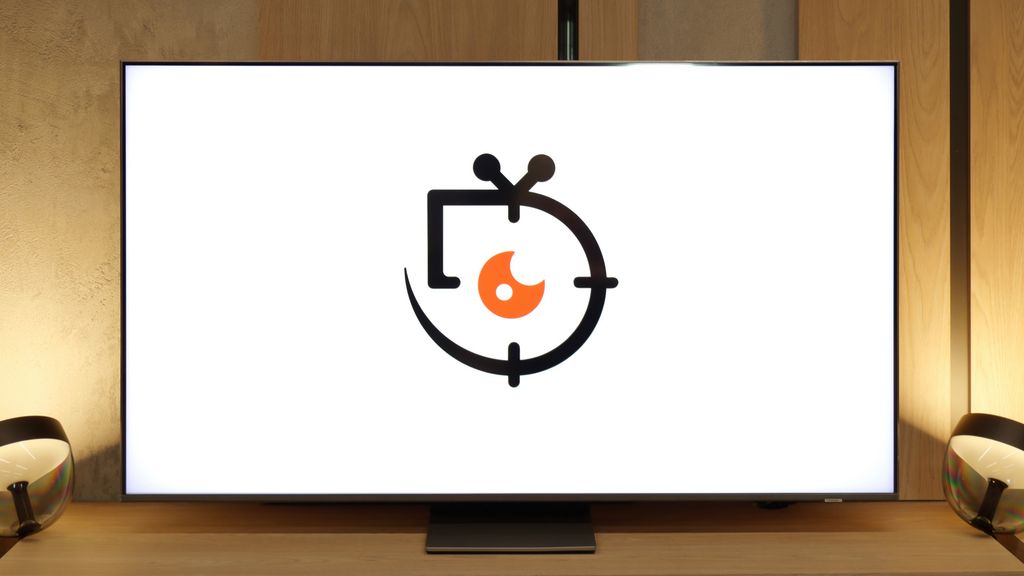
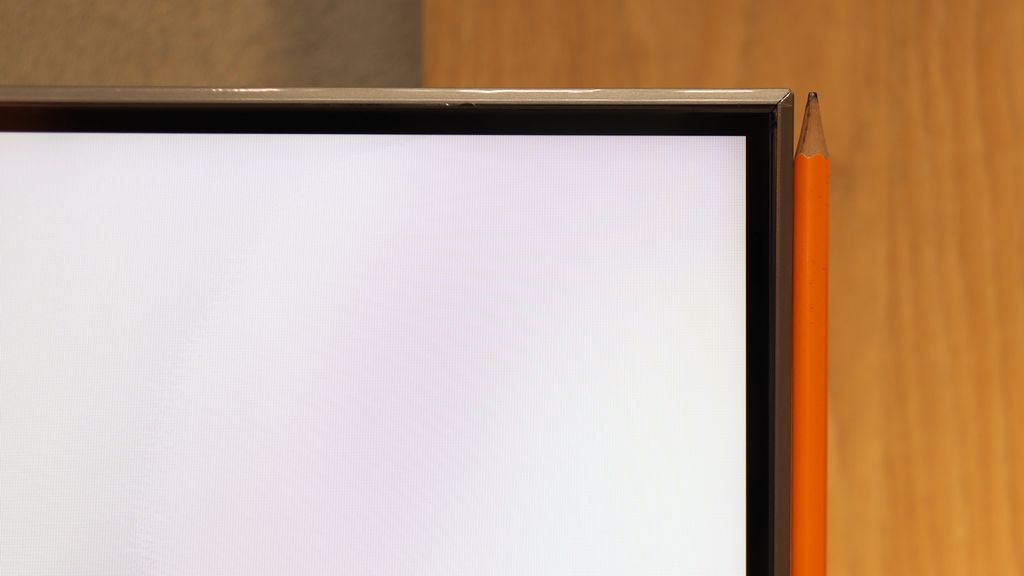
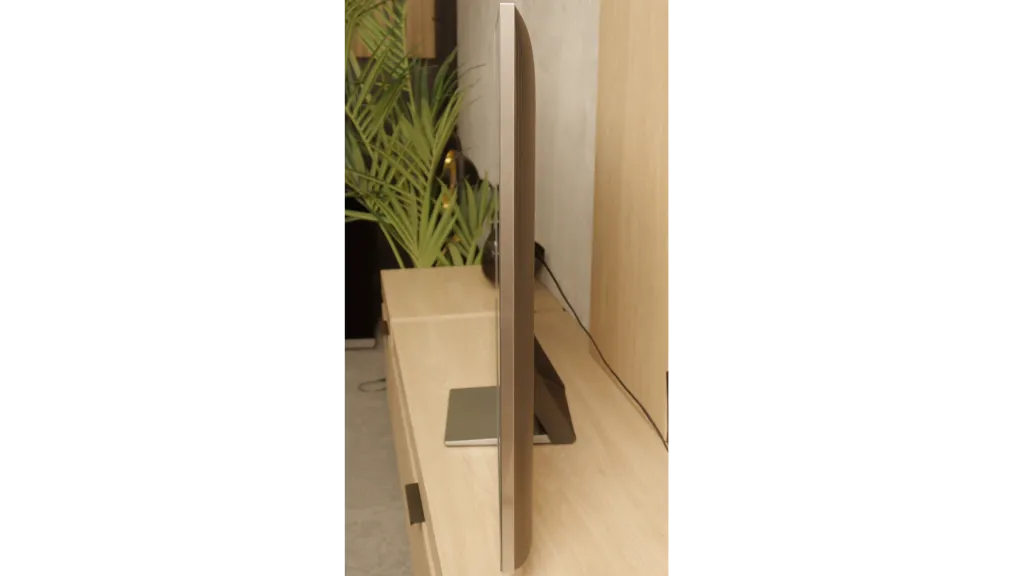
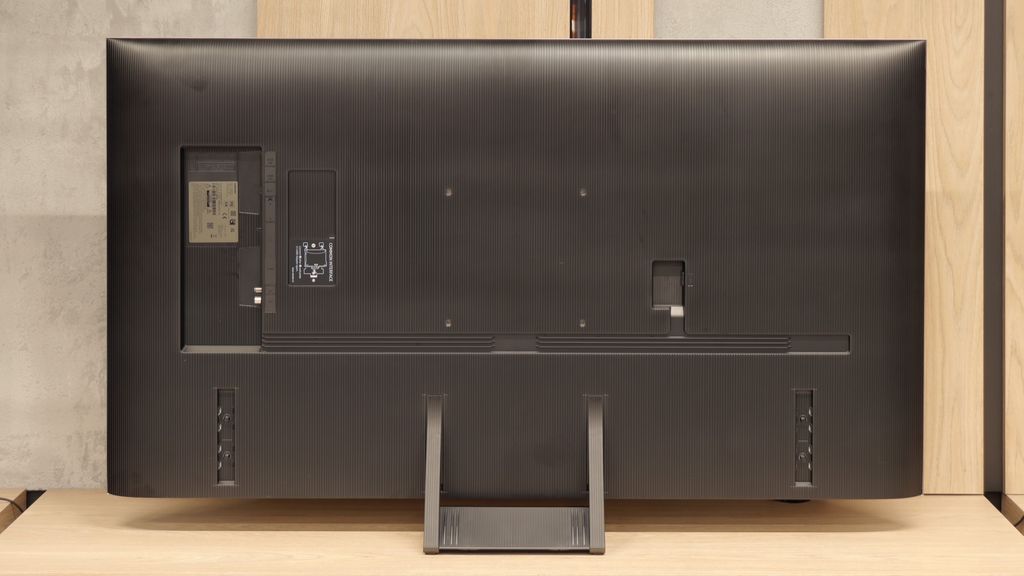
Contrast and black detail
10/10
7.5/10
Local dimming function: Yes, number of zones: 240 (20 x 12)
Contrast:

Result
∞:1

Result
∞:1

Result
∞:1

Result
∞:1

Result
∞:1

Result
101,800:1

Result
18,650:1

Result
47,050:1

Result
9,700:1

Result
4,350:1
Halo effect and black detail visibility:

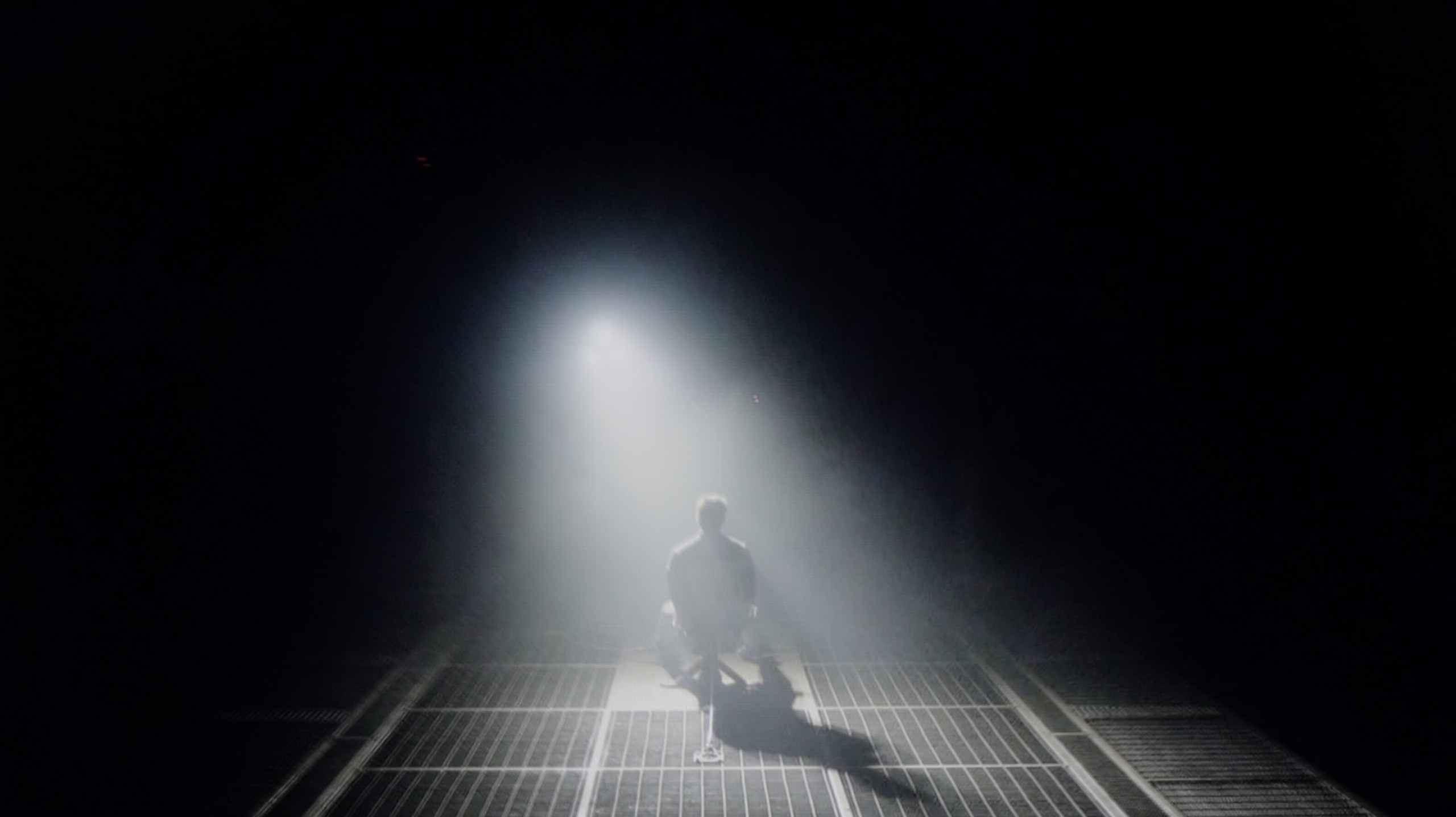
The Sony Bravia 8 television, equipped with an OLED matrix, delivers exceptional picture quality with outstanding black levels and contrast. Thanks to OLED technology, each pixel emits its own light, ensuring deep blacks and precise light reproduction. During testing with scenes from films like Oblivion and The Revenant, the Bravia 8 showcased impeccable separation between light and dark elements, producing detailed and lifelike images, even in challenging high-contrast scenarios. This performance places the Bravia 8 among the top models in its class.
Our editorial team received a 55-inch model with a VA panel. In the case of NeoQLEDs, which are TVs with Mini-LED backlighting, size is incredibly important because the larger the screen, the more local dimming zones it can have. This directly translates to higher contrast. In the variant we tested, we counted as many as 240 dimming zones, which is twice as many as in last year's QN85D. Theoretically, such an increase should bring an equally impressive improvement in contrast. Unfortunately, practice showed something different – the QN85F offers results very similar to its predecessor. Yes, in some scenes with a lot of black or in areas where details in the highlights are crucial, there is progress, but it is not proportional to the number of zones. Mini-LED technology can be capricious, and sometimes around small, bright objects, there are subtle halos. This is a typical compromise that one must accept with such a solution. Nevertheless, the contrast in the QN85F is at a very high level and will easily satisfy most users, even the more demanding ones. However, we have the impression that Samsung could refine the algorithms controlling dimming because we know from experience that they can perform really well in other models.
HDR effect quality
6.8/10
6.9/10
Luminance measurements in HDR:

Result
849 nit

Result
865 nit

Result
888 nit

Result
880 nit

Result
469 nit

Result
1248 nit

Result
860 nit

Result
1093 nit

Result
465 nit

Result
957 nit
Scene from the movie “Pan” (about 2800 nits)


Scene from the movie “Billy Lynn” (about 1100 nits)


Static HDR10


Dynamic: Dolby Vision
Dynamic: HDR10+


HDR luminance chart:
Samsung QN85F
HDR luminance
Sony Bravia 8 (XR80)
HDR luminance
Luminance of RGB colors
The Sony Bravia 8 performs commendably in terms of HDR brightness, reaching a peak of 880 nits. This level is sufficient to render lighting effects effectively in most scenes. In tested clips from Life of Pi and Sicario 2, the television demonstrated vibrant, detailed imagery that captured the atmosphere of these films beautifully.
However, challenges arise in scenes with consistently high brightness, such as in The Meg, where the display's limitations become apparent. In these situations, OLED technology can struggle, with brightness levels dropping to around 450 nits, which can be less satisfying when intense illumination is needed throughout a scene. Despite this, the Sony Bravia 8 remains a strong contender, offering excellent DCI-P3 colour gamut coverage and 74% BT.2020 coverage. These attributes result in rich, accurate colours and fine details, enhancing HDR content and providing an enjoyable viewing experience.
Although the more than double number of dimming zones compared to its predecessor has not translated into a spectacular jump in black levels and contrast, we definitely felt it in the HDR effect itself. The QN85F is up to 50% brighter than last year's model, making a huge impression in dynamic scenes. The peak brightness can reach nearly 1700–1800 nits, which is truly impressive in this Mini-LED class. The best part is that almost regardless of the scene being viewed, the HDR effect remains strong and vibrant. In four out of five test scenes, the brightness was around 1000 nits, a level that in most cases allows viewers to feel the true magic of this format. Of course, in scene number 4 from the movie Sicario 2, the limitations of Mini-LED technology become apparent – the brightness of the helicopter's spotlight drops to around 500 nits. It's not an outstanding result, but it's still much more acceptable than in last year's model. Samsung deserves applause, as the improvement in brightness in the QN85F is substantial compared to its predecessor. However, it's a pity about a certain trend seen in this year’s televisions – the manufacturer has worsened the color gamut coverage. Although the QN85F has a QLED panel, its result of around 90% DCI-P3 is average, and in the most demanding films, it can lead to less vibrant colors than in the predecessor. Despite this shortcoming, the overall HDR effect is at an excellent level and really makes a big impression in this class of devices.
Factory color reproduction
7.2/10
4.8/10


Factory Mode
After calibration


Factory Mode
After calibration
The best factory mode on the Sony Bravia 8 television is IMAX Enhanced, offering the most cinematic experience, though it isn't perfectly calibrated. The TV attempts to replicate cinematic settings as accurately as possible, but some issues are evident. Starting with white balance, both for SDR and 4K content, there is a noticeable blue dominance, making the image appear too cold and lacking in natural warmth. Colour Checker tests reveal a shift towards cooler tones, affecting colour accuracy and making the image feel less lifelike.
Regarding brightness and contrast, the gamma shows a significant drop towards the end of the spectrum, meaning dark details may become too shadowed, and bright areas too intense, causing a loss of subtlety and detail. This is particularly noticeable in the sky, as seen in the comparison image. Additionally, the EOTF curve is considerably above the reference value, making bright elements overly intense. As a result, users may experience an unnatural image, with bright parts losing detail and negatively impacting the overall viewing quality.
The Samsung QN85F offers several preset picture modes, but out of the box, the television starts in "Eco" mode. We could actually end the discussion here, because for such a model, using this setting makes no sense – the picture is washed out, unpleasant, and far from what we expect from a television of this class. Therefore, we conducted our tests in the best available mode, which is the Filmmaker mode. Its purpose is to faithfully reproduce what the directors saw while filming, and indeed, this setting performs best among all the factory options. However, this does not mean it is free of flaws.
Both in SDR and HDR, the QN85F strongly highlighted warm colors. This stemmed from a lack of white balance, with a noticeable absence of blue. Additionally, the picture sometimes appeared overexposed – both the gamma brightness characteristic and the EOTF curve indicated that the television has a tendency to blow out scenes. In SDR, the color reproduction errors (Delta E at levels of 4–5) were still acceptable, but in HDR, the inaccuracies became really significant and clearly deviated from what the creators intended to show us. Fortunately, Samsung provides a wide range of calibration tools in its televisions, so – as always – we proceeded with professional calibration to see how much could be improved.
Color reproduction after calibration
8.2/10
8.5/10



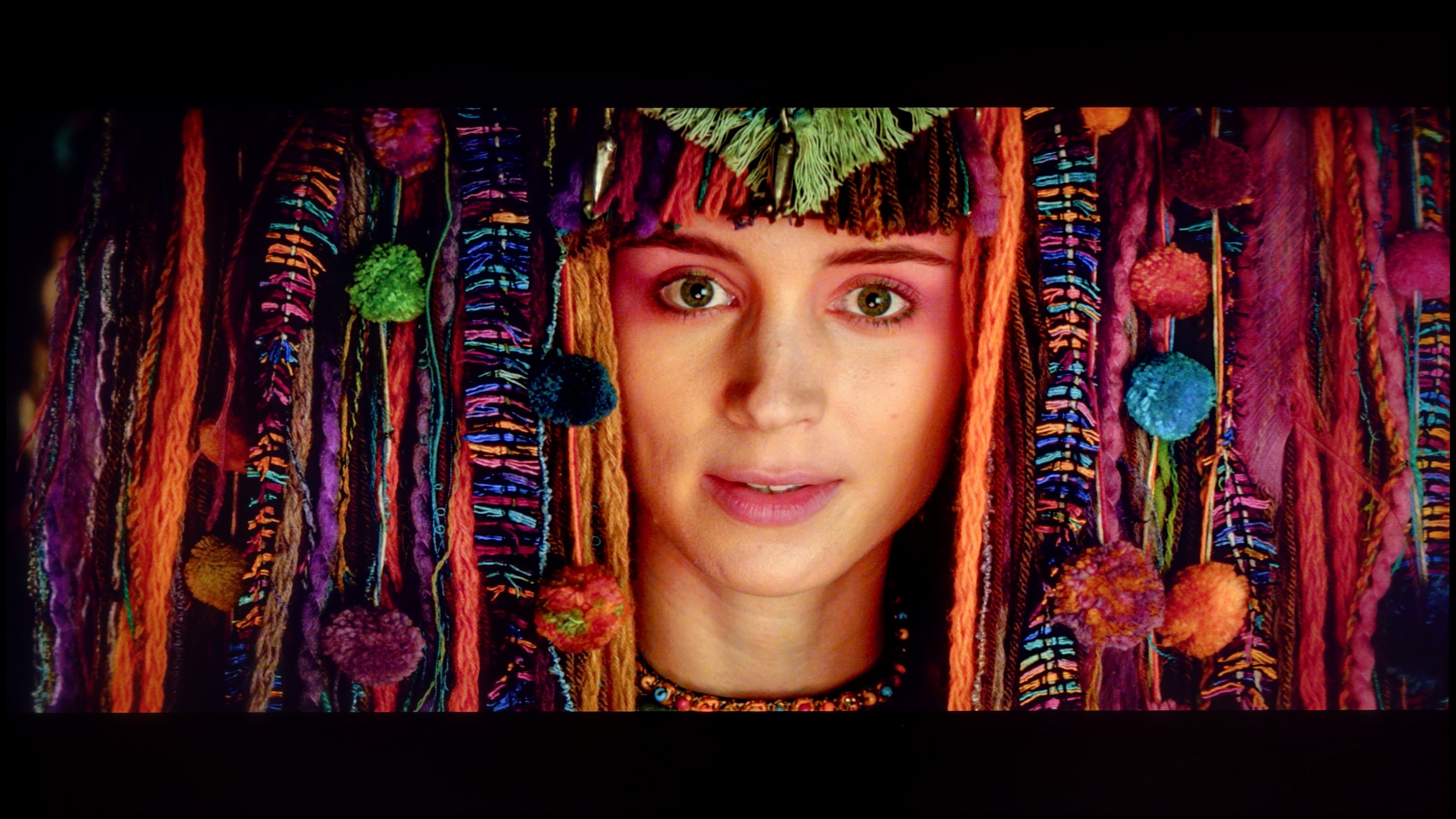
The calibration process of the Sony Bravia 8 television resulted in significant improvements in image quality. The white balance was notably enhanced for both SDR and 4K HDR content, with minimal errors in the middle section of the graph. Gamma calibration was one of the biggest improvements, eliminating previous dips that had impacted brightness stability and the reproduction of detail in dark areas. The EOTF curve was also corrected, making bright elements appear more natural and improving the overall tonal balance.
However, the most attention should be given to colour reproduction, where some issues persist despite calibration. Sony has omitted the CMS system in this model, which would allow for more precise colour control. As a result, the Colour Checker test for 4K content still reveals significant colour inaccuracies. Despite these limitations, calibration is still recommended, as the improvements in brightness and contrast are noticeable and greatly enhance the overall image quality.
After calibrating the movie mode, we managed to tame the colors in both modes to nearly perfection – most of them did not exceed an error value of 3, which is the limit of visibility to the human eye. The image became more natural, fuller, and at the same time devoid of the blooming that was noticeable right after taking the TV out of the box. This shows how much potential lies in the QN85F and how well it responds to precise settings. However, this does not change the fact that certain technological barriers cannot be overcome. Despite the significant benefits of calibration, limitations of the panel itself still remain. Although the number of dimming zones has doubled compared to its predecessor, the algorithms controlling the backlighting can manipulate brightness in their own way. Sometimes this leads to slight color distortions or subtly visible halo effects around bright objects. Nonetheless, the reception after calibration is really pleasant and shows how good a screen the QN85F can be if we just take a moment for the right settings.
Smoothness of tonal transitions
5/10
9/10

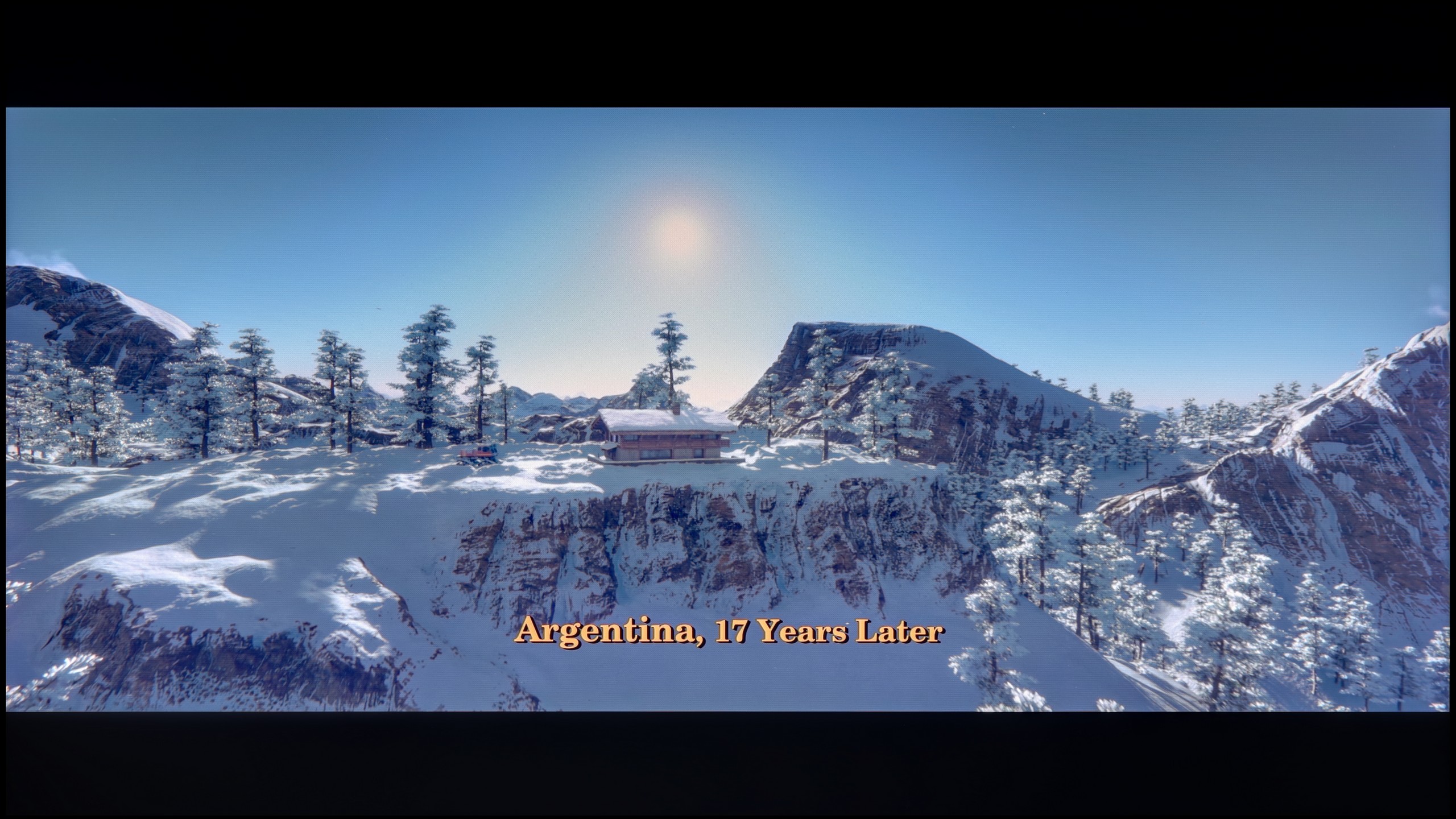



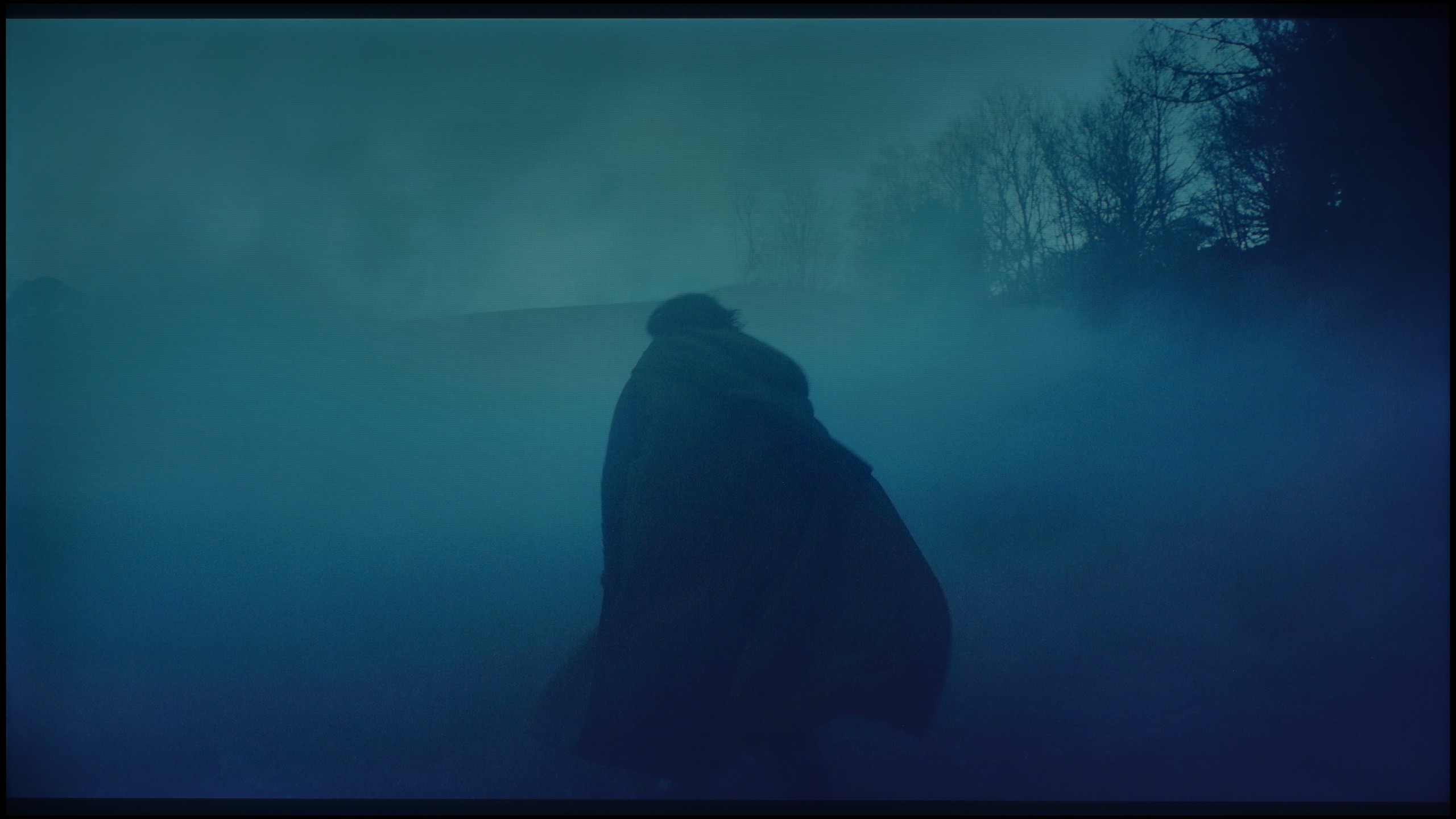

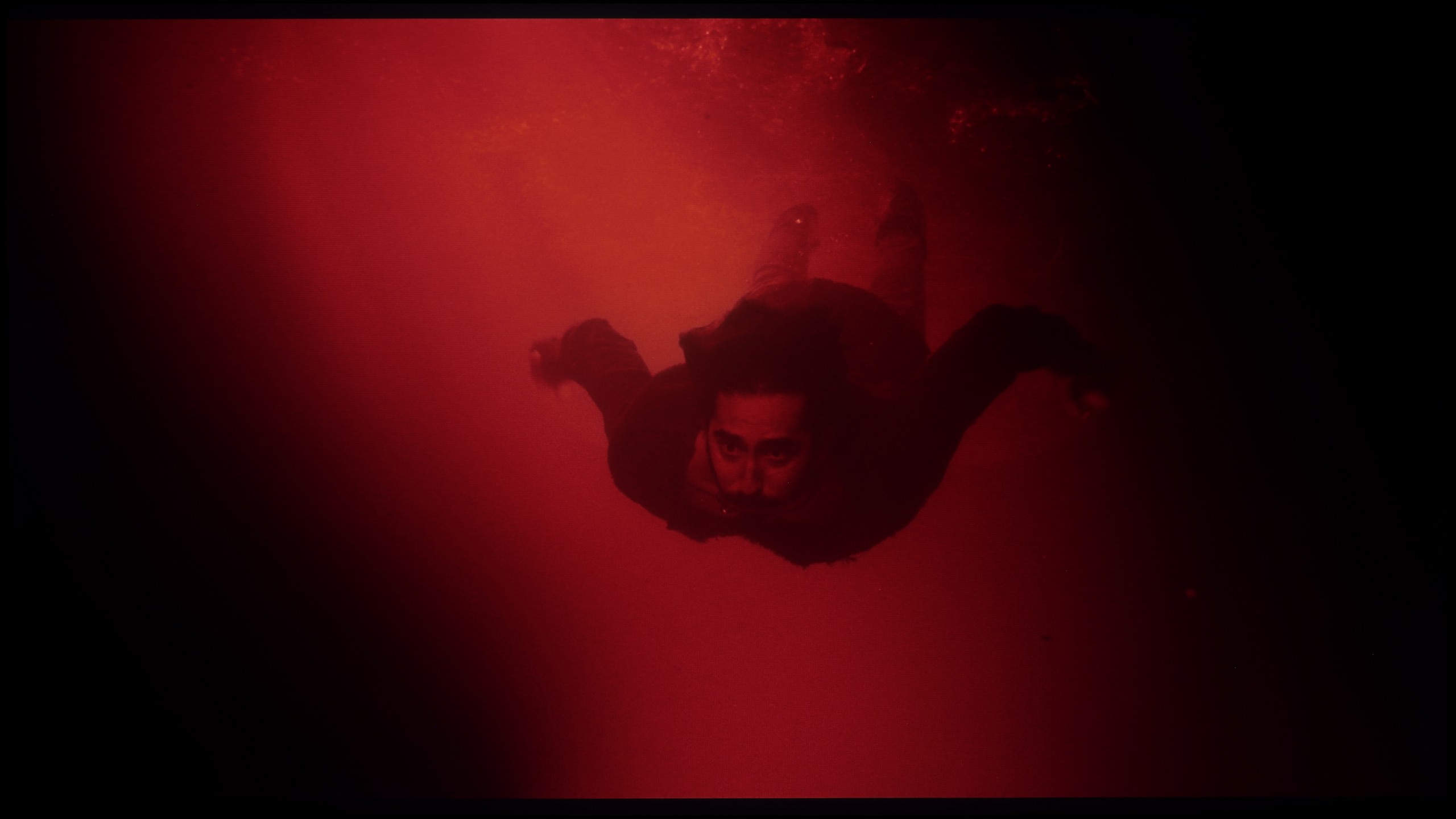




In 4K materials, the gradation is notably poor and disappointing. Visible seams are apparent in dark and light colours, detracting from the image quality and diminishing the overall viewing experience of high-resolution content. This is a notable weakness, as Sony's processors have typically excelled in this area, but it appears to be a failure this time.
Minor color errors are practically unnoticeable; it is the smoothness of tonal transitions that is a category that even a less experienced viewer will notice. Unfortunate bands and artificial lines can completely ruin the perception of the image. Fortunately, the QN85F handles this aspect almost perfectly. Gradients are smooth, transitions between colors are seamless, and there are no artificial strokes or clear lines separating the hues on the screen. The image remains cohesive, and nothing distracts our attention from the content. Only under very extreme conditions did we notice slight issues in the gray palette, but this is a drawback typical of most televisions and it's hard to consider it a serious downside. In practice, while watching movies, we encountered no problems.
Image scaling and smoothness of tonal transitions
6.1/10
7.5/10
Smooth transition function

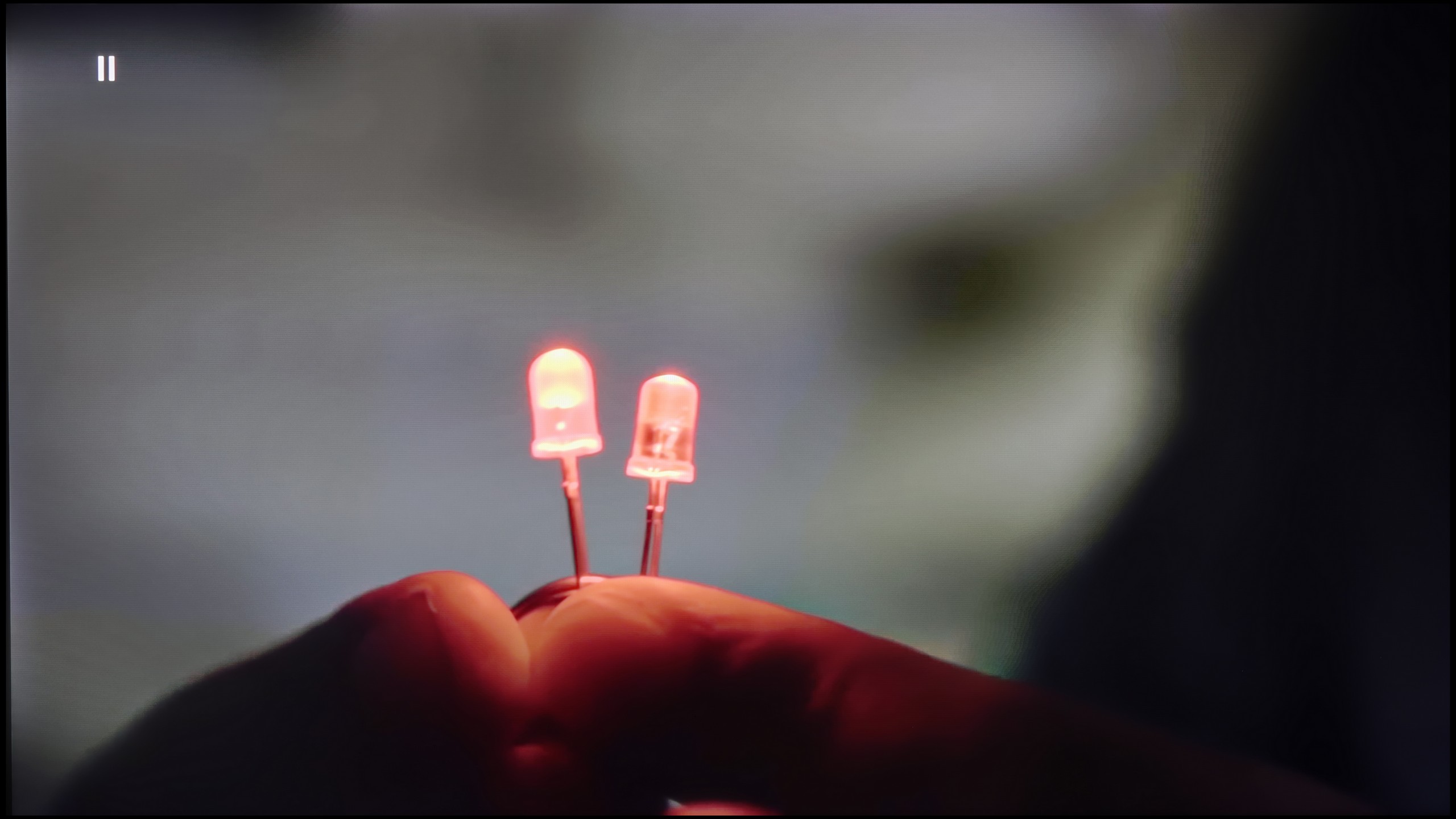
Image without overscan on the SD signal


The fluidity of tonal transitions in lower-quality materials on the Bravia 8 is lacking. Unfortunately, the gentle gradation function, which was available in previous models, is missing, which is a significant drawback. The digital noise reduction feature can improve tonal transitions, but it often removes fine details, such as clouds in scenes from The Martian, which may not be to everyone's taste. On the other hand, the digital processing in the Sony XR80 is quite effective. In test scenes, it performed well without noticeable flaws, and the branches in the background remained smooth without jagged edges. This indicates that the Bravia 8 is capable of handling complex low-resolution image details with relative ease.
Although the native tonal transitions on the QN85F perform excellently with 4K materials, we don't always deal with content in the highest resolution. That's when it becomes crucial how the television handles upscaling and digital image processing. This process is managed by Samsung's proprietary processor – AI NQ4 Gen2. In practice, it works very efficiently. If visible color banding or other undesirable phenomena appear on the screen, for example in materials from YouTube, they can be easily smoothed out using the "noise reduction" function. Set to medium, it improves tonal transitions while not excessively blurring desired details. However, it's important to remember that – as with most Samsung televisions – this feature significantly affects the film grain. Therefore, during movie screenings, it's advisable to use it cautiously to maintain the natural character of the image.
The upscaling itself looks very good. Test materials in lower resolutions were displayed sharply and clearly, with a lot of detail. The only drawback remains the issue of overscan, which is cutting off the edges of the screen. In most situations, this is not noticeable, but with very old materials below HD quality, there may be instances where part of the image on the left side is slightly cropped.
Blur and motion smoothness
8.5/10
7.7/10

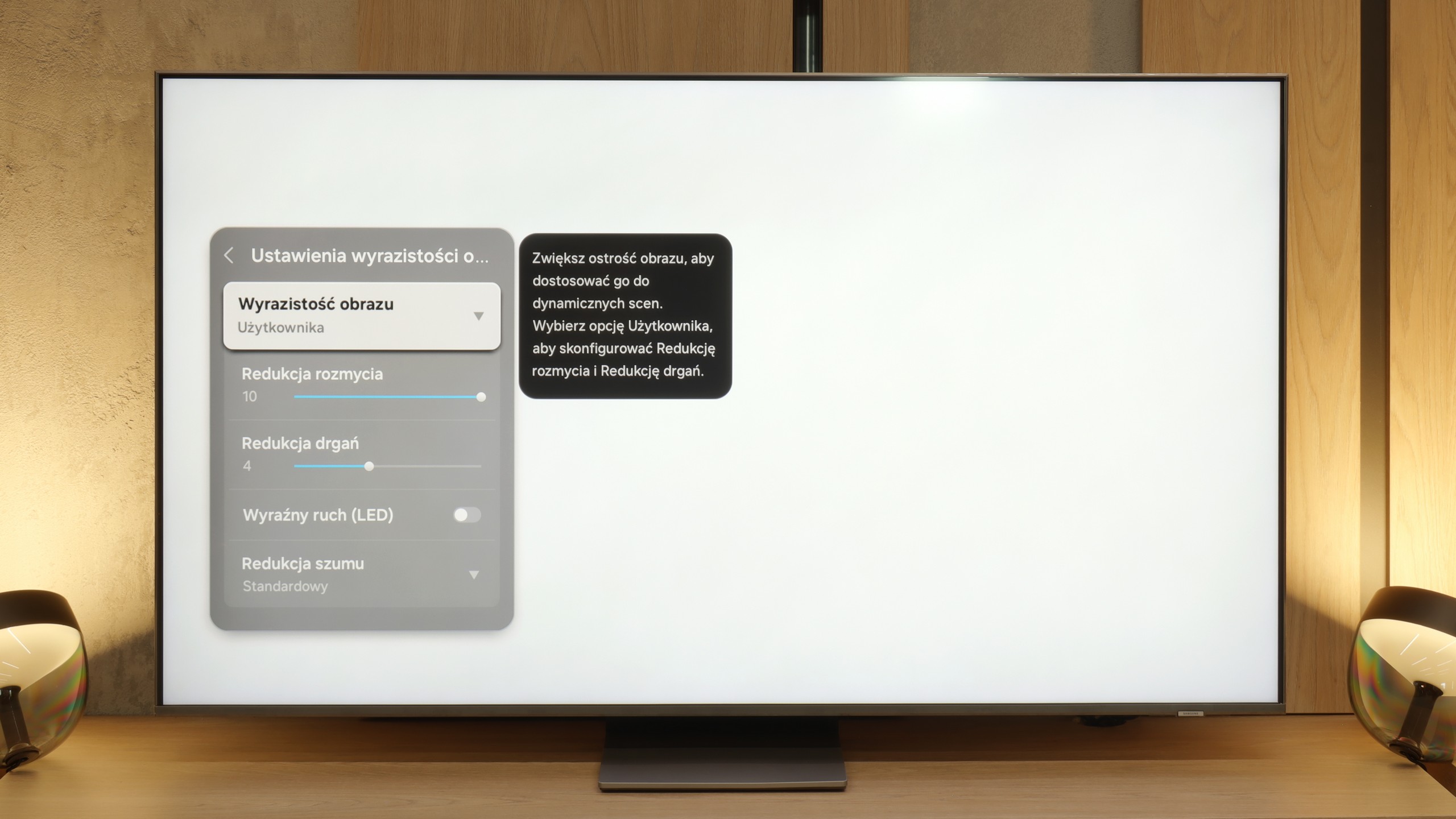
Blur (native resolution, maximum refresh rate):



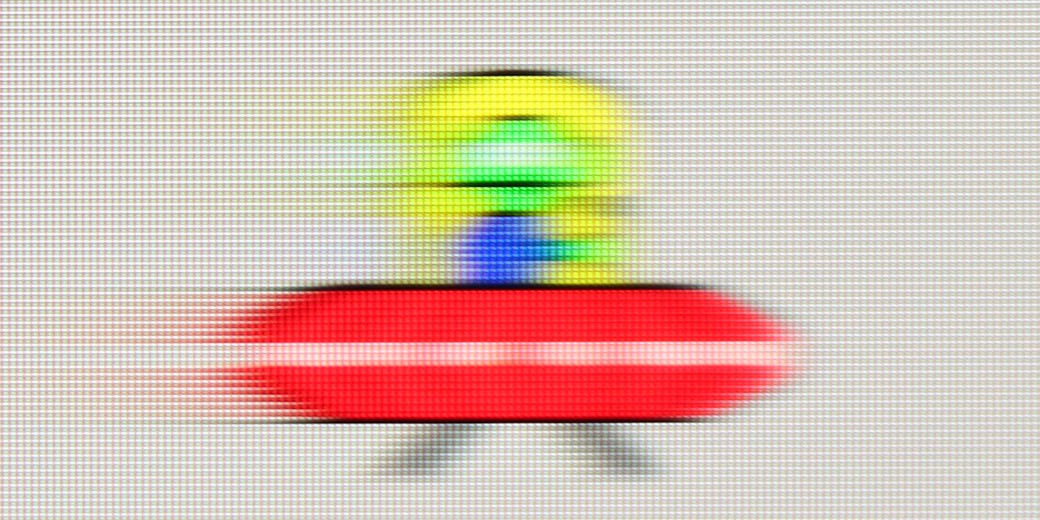
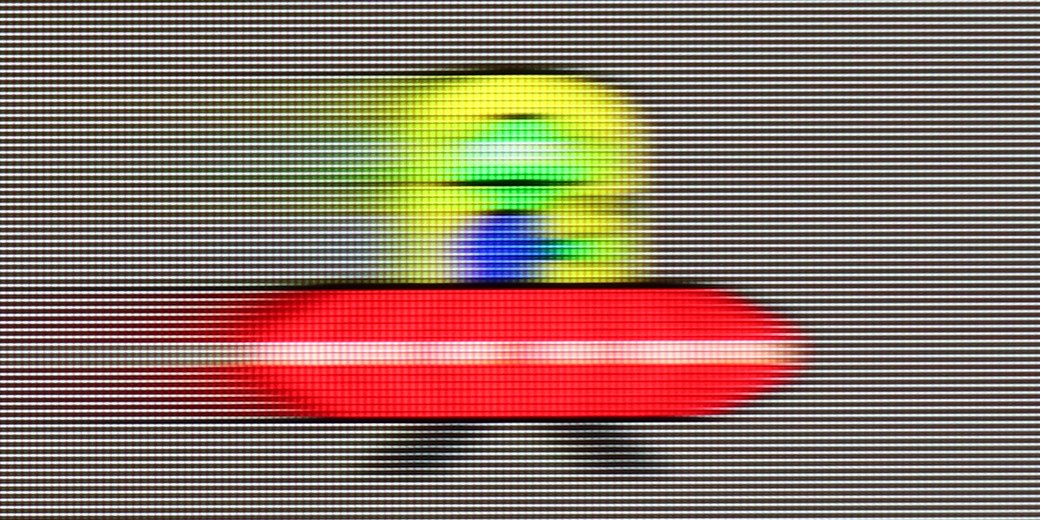
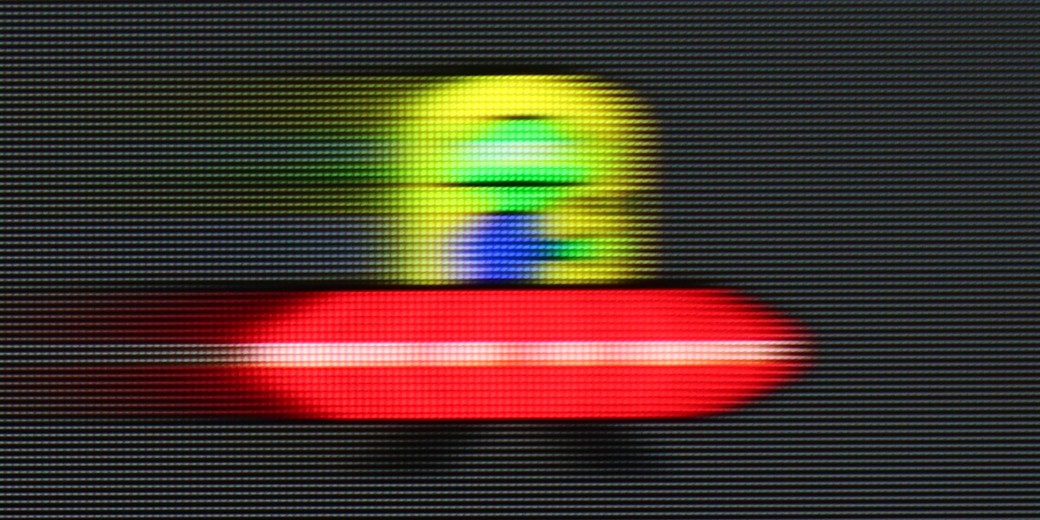
Blur (BFI function enabled):
Image flickers in this mode



Image flickers in this mode



Smużenie ():
Smużenie (4K@144Hz):
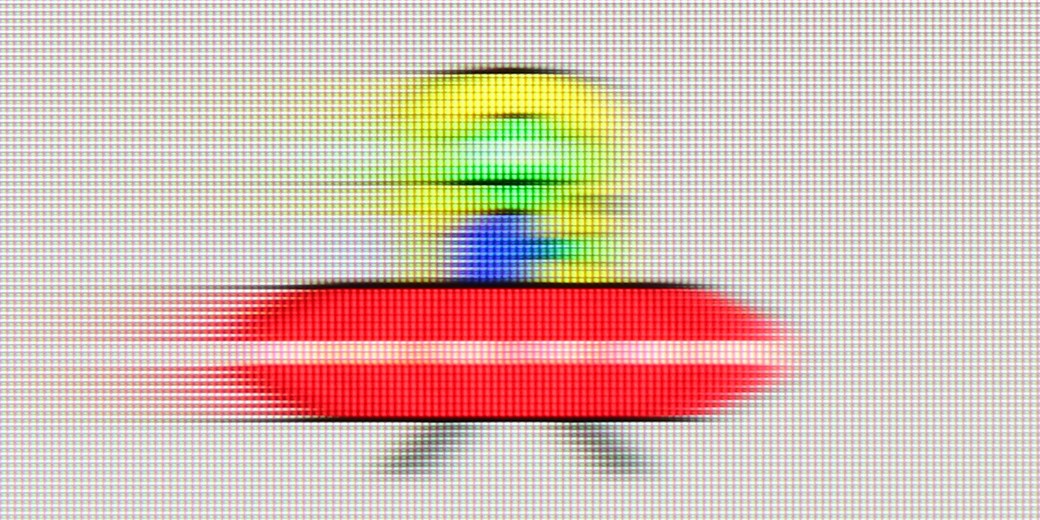
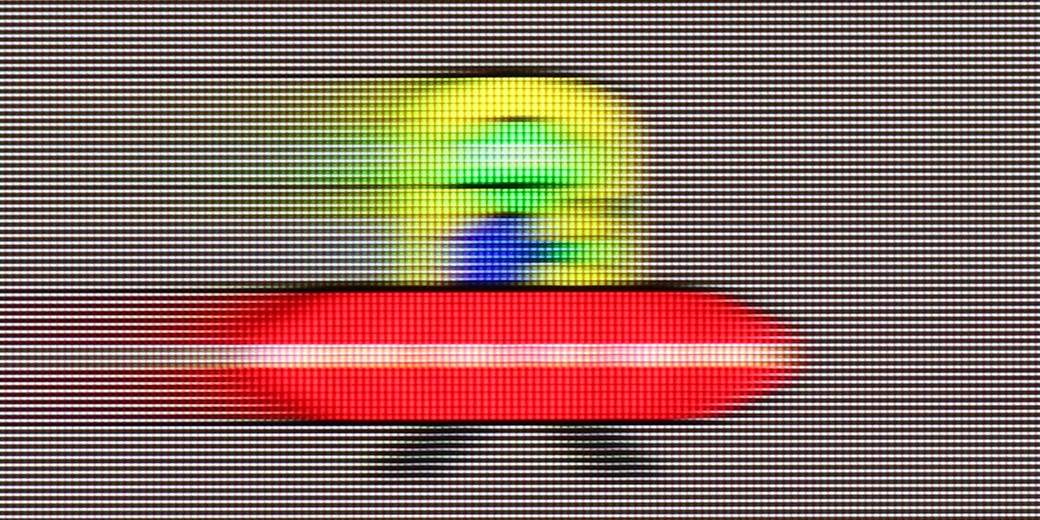
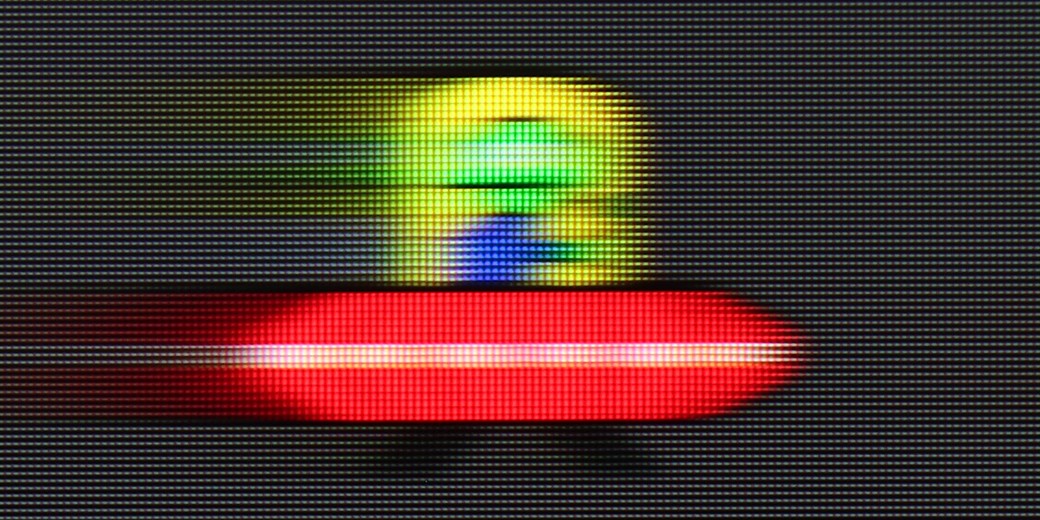
The Sony Bravia 8 offers a maximum refresh rate of 120 Hz, ensuring smooth viewing of dynamic content such as sports and games, with sharp and fluid motion. For more demanding users, the Sony XR80 features an advanced motion smoothing system, divided into three settings: Smoothness (Film), Smoothness (Camera), and Clarity. The first two settings adjust the level of blur and smoothness, while the Clarity setting will be discussed in more detail below. Each of these parameters can be customised to suit individual preferences, allowing users to fine-tune the settings for the optimal viewing experience.
Motion blur and fluidity of motion in the QN85F is a topic worth discussing in more detail, as the television is equipped not with a standard 120 Hz panel, but with a 144 Hz panel. The additional hertz will primarily be appreciated by PC gamers, but the mere presence of such an option can be seen as a nice addition and a sign of the times – it’s hard to complain about the trend towards faster panels, since in practice, each of us would like the image to be as fluid as possible. However, the most important thing is how the television handles typical 120 Hz refresh rates – in the case of consoles, sports, or films recorded at 24 or 30 frames per second. And here, the QN85F performs really well. In movies, you can easily adjust the character of the image thanks to the “picture clarity” function, where we find two adjustable sliders. Key for viewing sessions is the one responsible for reducing motion blur. Lower values give the image a more cinematic character with preserved “frame rate,” while higher values lead to a strong smoothing that resembles television theater.
Console compatibility and gaming features
8.1/10
8.2/10
- ALLM
- VRR
- VRR range48 - 120Hz48 - 144Hz
- Dolby Vision Game Mode
- Correct implementation of HGIG
- 1080p@120Hz
- 1440p@120Hz
- 4K@120Hz
- Game bar

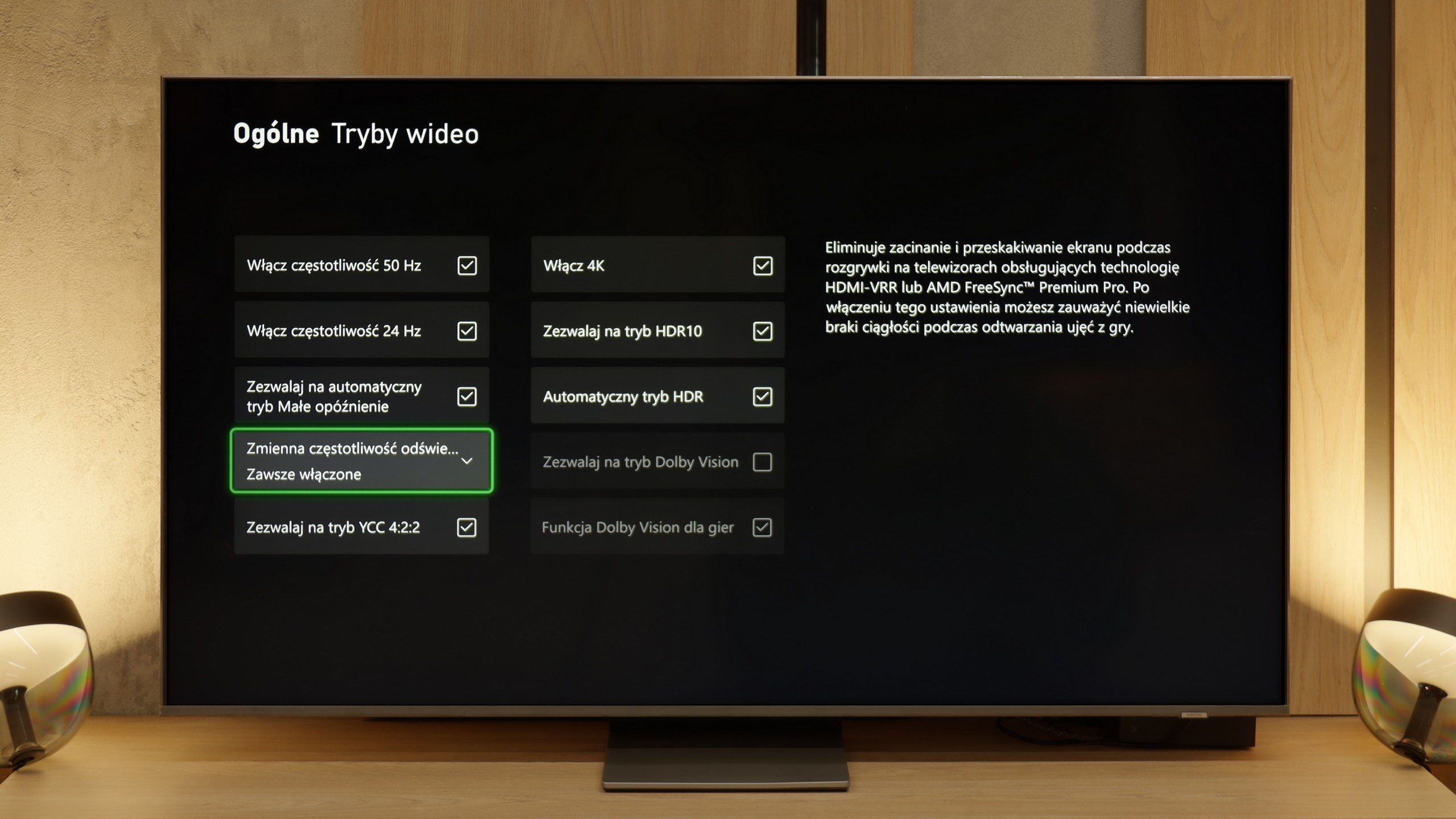

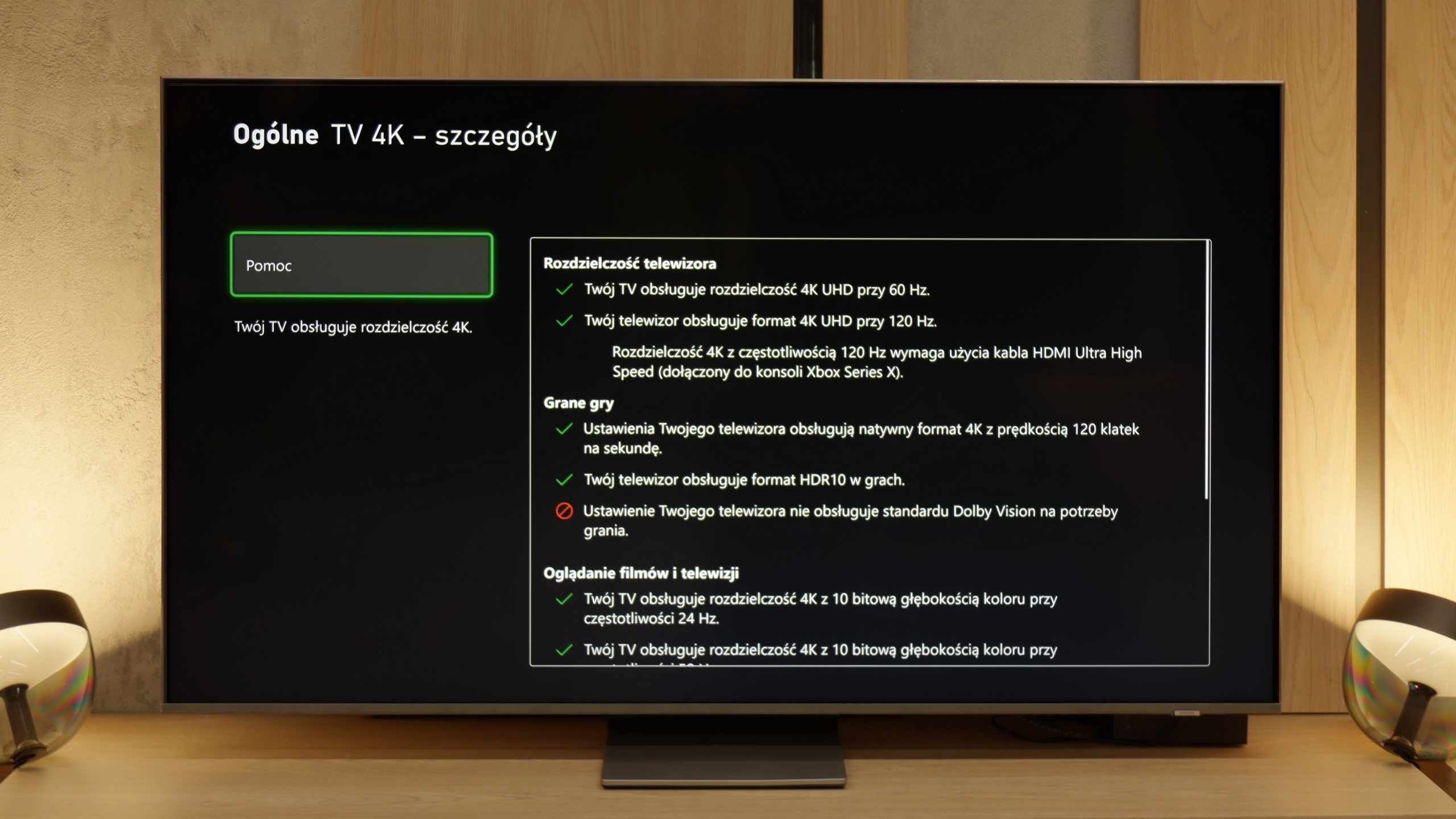

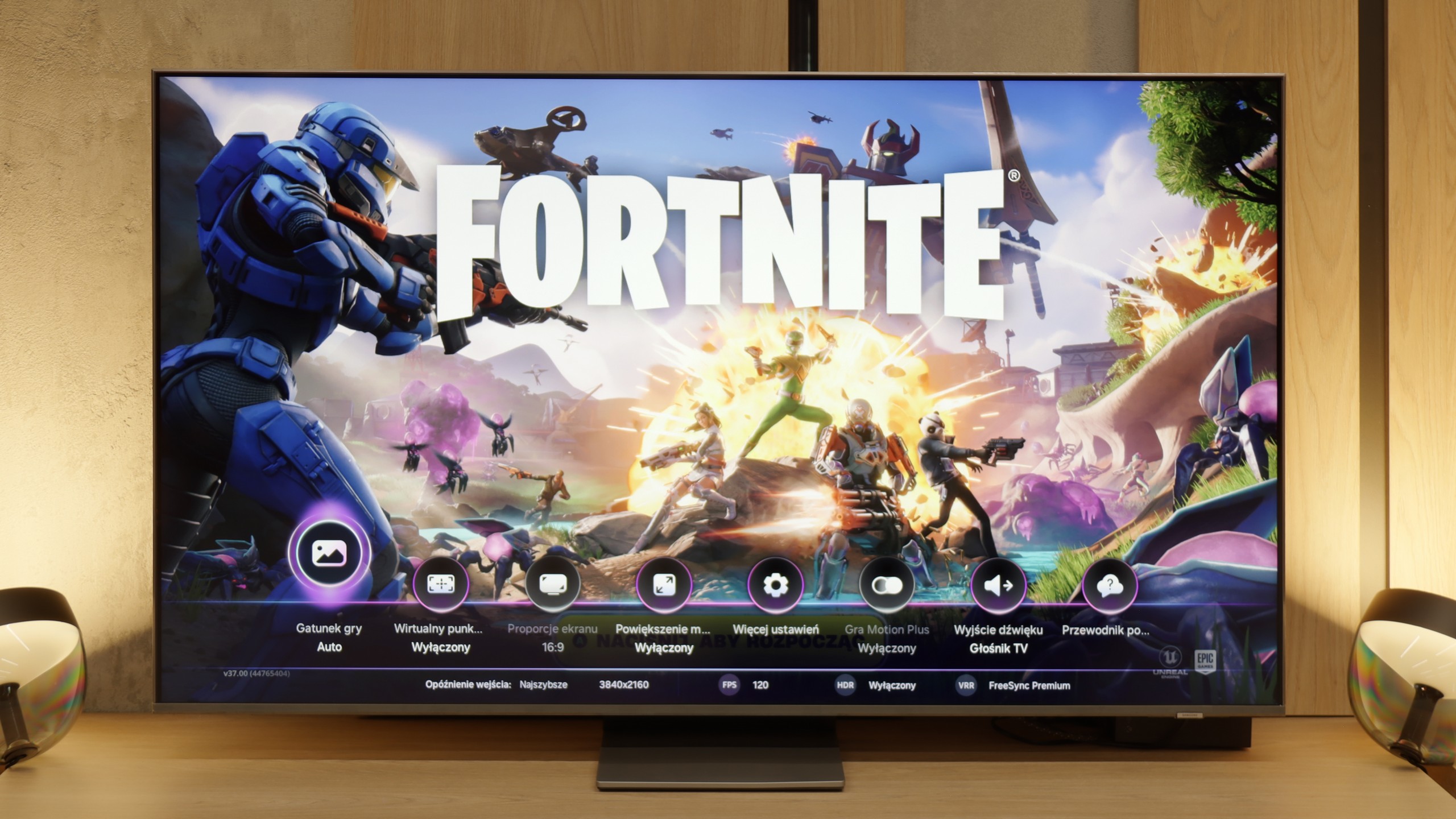

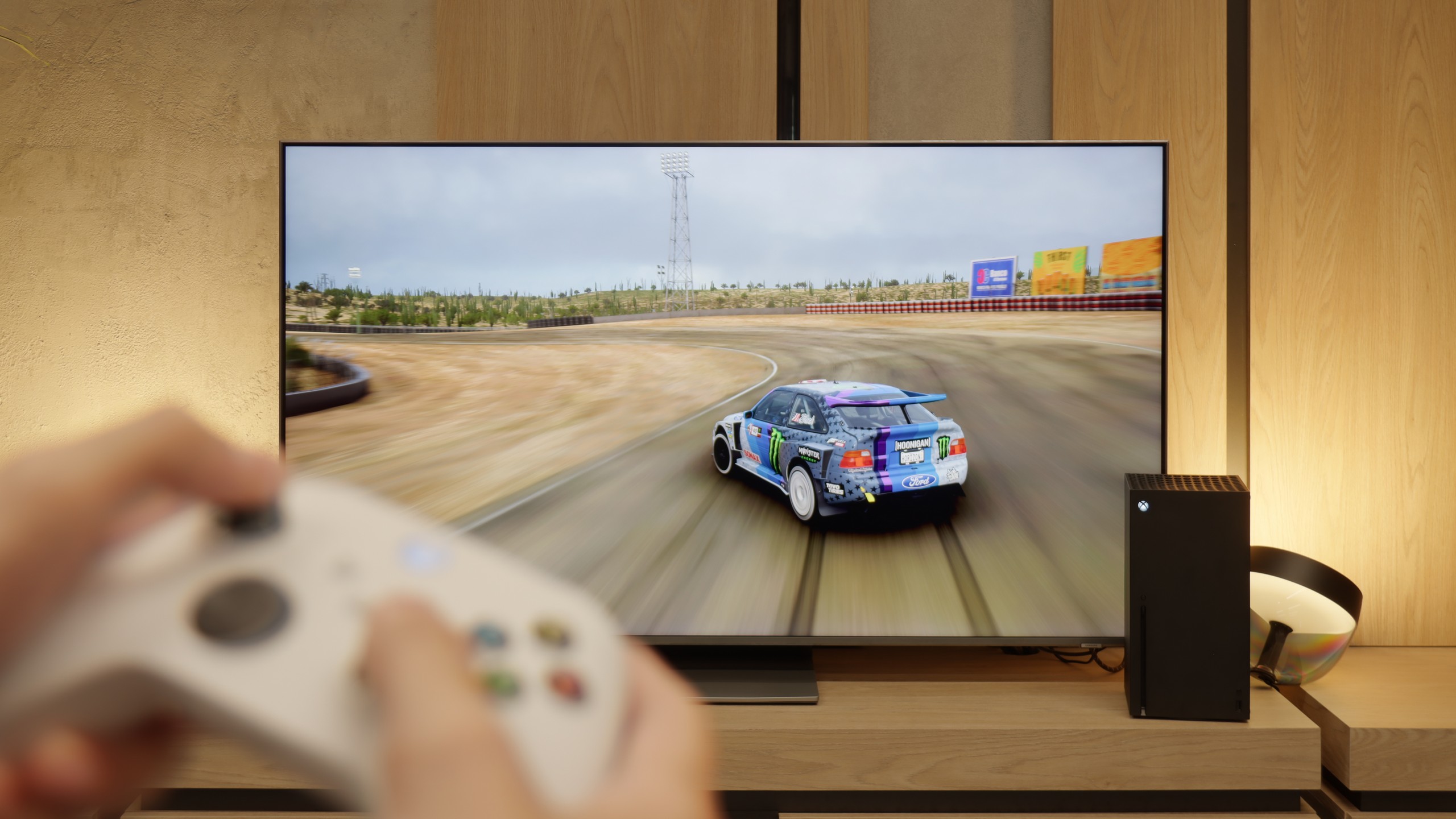
The Sony Bravia 8 has greatly improved its compatibility with consoles compared to earlier models. It supports variable refresh rate (VRR), which eliminates screen tearing and can sync with graphics cards for smooth visuals. The Auto Low Latency Mode (ALLM) reduces input lag, a crucial feature for fast-paced games. Additionally, Dolby Vision with low latency enhances HDR effects, offering stunning visuals during gameplay.
The Sony XR80 also includes a Game Bar, which provides quick access to settings and monitoring tools during gaming. A notable feature is the option to enable a virtual crosshair on the screen, giving players a potential advantage in shooter games.
However, there are some drawbacks. The TV lacks support for 1440p@120Hz resolution, which would benefit users with less powerful graphics cards. Furthermore, the Sony XR80 has only two HDMI 2.1 ports, one of which is typically used for connecting an audio system via eARC, limiting the number of available ports for next-gen consoles.
The Samsung QN85F makes a really great impression from a gaming feature standpoint. We have four HDMI 2.1 ports here, so we can connect multiple devices simultaneously without any problems. It also has variable refresh rate (VRR), which prevents screen tearing, as well as automatic game mode (ALLM), which allows the TV to switch to the appropriate settings by itself when we launch the console. Additionally, it supports refresh rates of up to 144 Hz – something that PC gamers will particularly appreciate, but the fact that such an option is available shows that Samsung is fully committed to supporting gamers. The Game Bar panel also deserves praise. It provides a quick overview of the most important parameters – from frame rates, to refresh modes, and even shortcuts to picture settings. Instead of digging through the entire menu, we have everything at our fingertips, which turns out to be really convenient in practice. However, the most interesting addition is the Game Motion Plus feature. It’s essentially a motion smoother, adapted for the gaming world. When enabled, the image becomes smoother; sometimes it even looks as though we’re getting a few more frames, and importantly – the response delay doesn’t increase enough to hinder gameplay. This is a solution that truly distinguishes Samsung’s 120Hz TVs from the competition.
The only serious drawback remains the lack of proper HGiG support. This is the standard that ensures correct tone mapping in HDR games, meaning that brightness and contrast are displayed according to how the developers intended them. Without HGiG, we have to manually adjust the brightness, which doesn’t always result in an ideal outcome. The feature was available in previous models, but it disappeared in the QN85F after one of the updates. We hope that Samsung will quickly fix this issue, and we will be keeping an eye out to see if they succeed.
Input lag
10/10
9.8/10
SDR
HDR
Dolby Vision
The low input lag on the Sony Bravia 8 is certainly a standout feature, with a remarkable 13 ms providing exceptional responsiveness. The Dolby Vision mode also deserves praise, as it performs exceptionally well on this model. Unlike many other manufacturers, where Dolby Vision often underperforms, it delivers its full potential here, enhancing the gaming experience.
The input lag on the QN85F is at a very high level. With content at 120 or 144 Hz, the values often oscillated below 10 ms, which is an absolutely remarkable result. Naturally, when playing at 60 Hz, the lag doubles, but it still remains low enough that in practice it is virtually unnoticeable. Thanks to this, the QN85F will be suitable for both dynamic e-sports games and calmer console titles.
Compatibility with PC
7.6/10
8.4/10

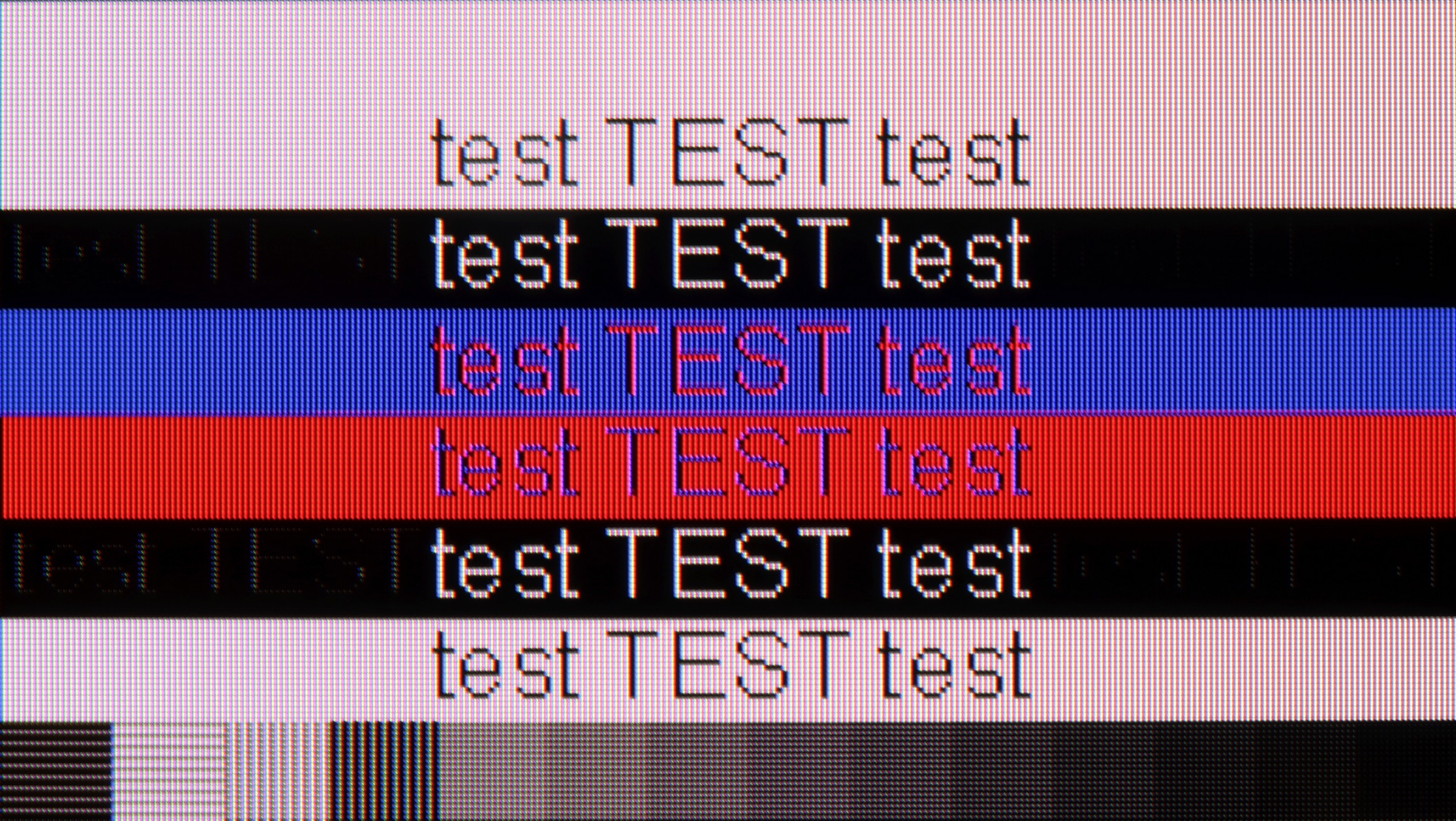
The Sony Bravia 8 works very well with computers, much like most WOLED matrix televisions. Font readability is excellent, making it comfortable to work with documents or browse websites. The impressive 5 ms input lag ensures excellent responsiveness during gameplay. The only downside is that fonts on a dark background appear slightly dimmed.
The QN85F performs really well in terms of cooperation with a computer. Thanks to the PC mode with a refresh rate of up to 144 Hz, support for G-Sync, and low input lag, gaming on a personal computer is very enjoyable and should not cause irritation even for more demanding players. The readability of fonts also looks good – the television supports chroma 4:4:4, so standard texts appear sharp and clear. A problem arises only with very thin letters. Regardless of the refresh rate setting – whether it’s 144, 120, or 60 Hz – horizontal, thin lines were hardly visible. Reducing the refresh rate slightly improved the situation, but never enough to say that they were displayed perfectly.
Viewing angles
7.3/10
3.2/10
The viewing angles on the Sony Bravia 8 are excellent, as expected from an OLED TV. The image retains its colours and contrasts even when viewed from wide angles. The only models that outperform it in this area are those equipped with MLA (Meta-Lens Array) technology and QD-OLED, which provide even wider viewing angles and superior image quality at extreme angles.
The viewing angles on the QN85F are a classic Achilles' heel of most LCD TVs with VA panels. When looking at the screen at an angle, there is a noticeable drop in brightness fairly quickly, and whites begin to gray out while colors lose their intensity. This is the price to pay for the high contrast that this technology offers. Samsung could have aimed for a better coating to widen the viewing angles in this model, but it is not found here. In practice, this means that the best viewing experience will be achieved when sitting directly in front of the TV, and any significant deviation will result in a clear loss of image quality.
TV efficiency during daytime
5.6/10
6.9/10

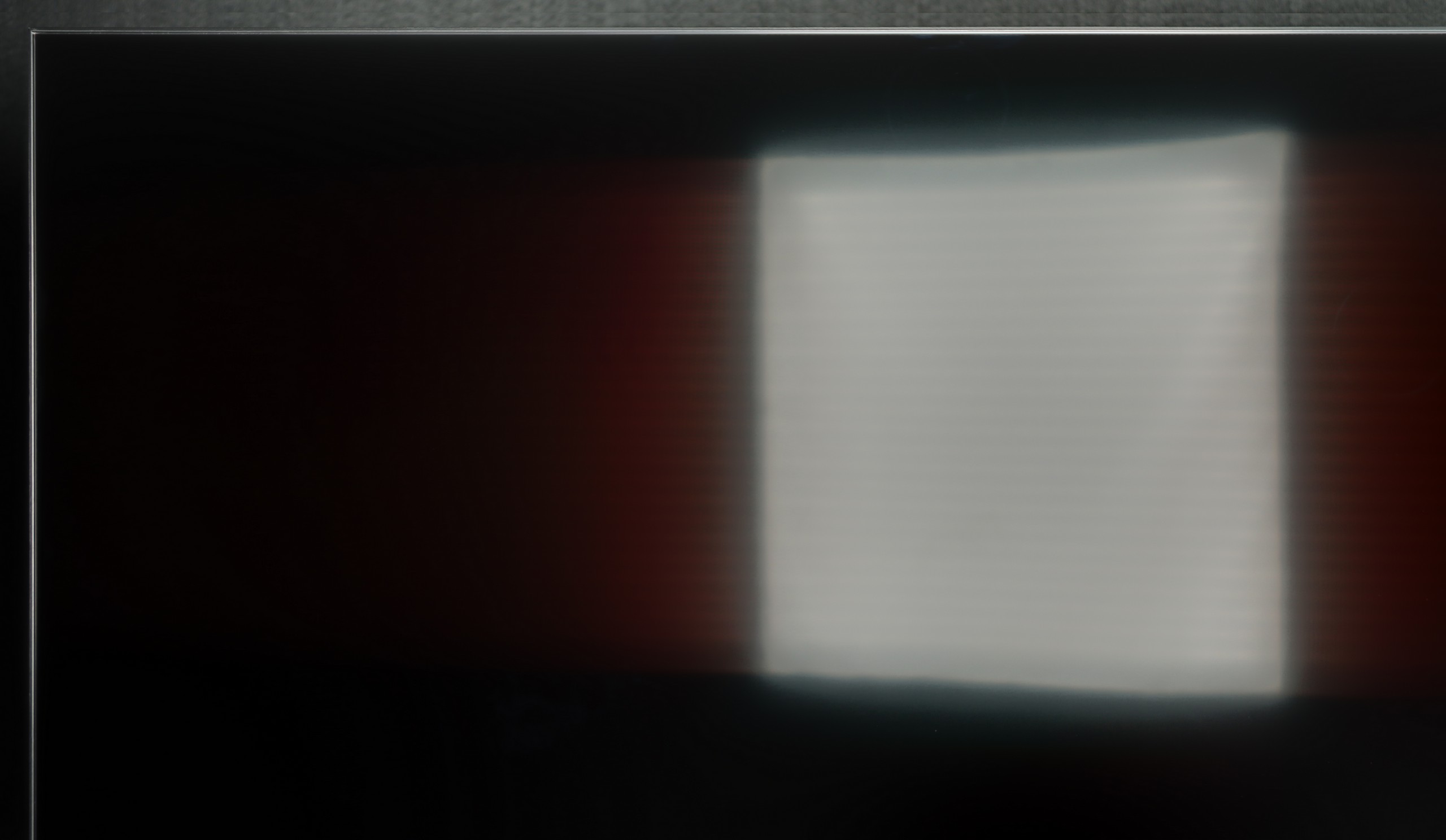


Matrix brightness
Average luminance SDR
Samsung QN85F : 690 cd/m2
Sony Bravia 8 (XR80): 335 cd/m2
The glossy matrix on the Sony Bravia 8 effectively reduces reflections, although they take on a slightly bluish hue. However, the brightness level of 330 nits is not particularly impressive, making this TV better suited for evening viewing. During the day, to ensure optimal image quality, it's advisable to close the windows to minimise the impact of external light.
QN85F performs excellently during the day. The satin coating of the panel combined with high brightness makes it a television designed for bright rooms. Colors do not lose their intensity, and the image does not wash out even when a lot of light comes in. The television itself is bright enough to handle a living room with large south-facing windows without any problems. Thus, the QN85F provides an image that allows us to watch movies or games during the day without annoying reflections and the feeling that the picture is fading in the sunlight.
Details about the matrix
Subpixel Structure:

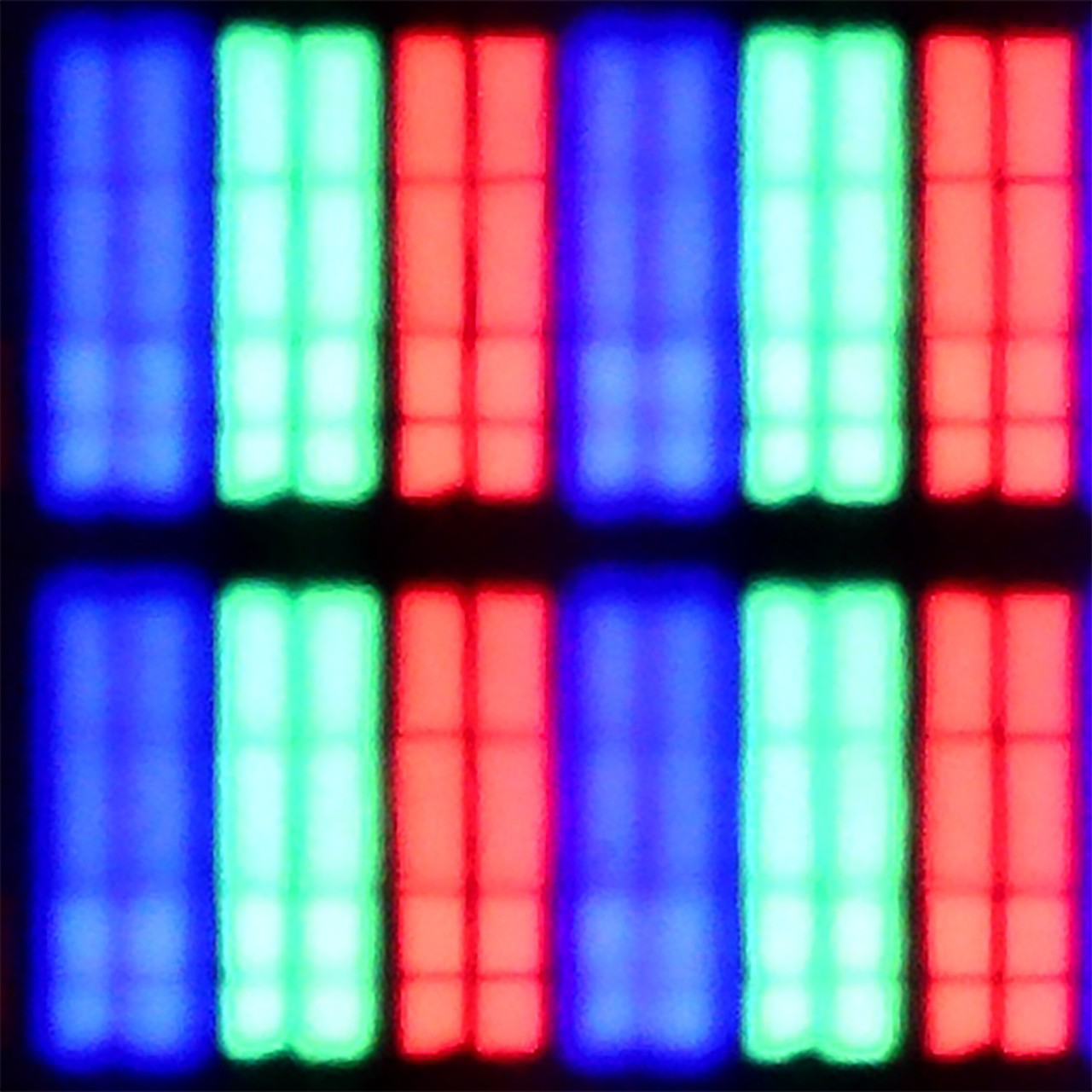
Panel uniformity and thermal imaging:

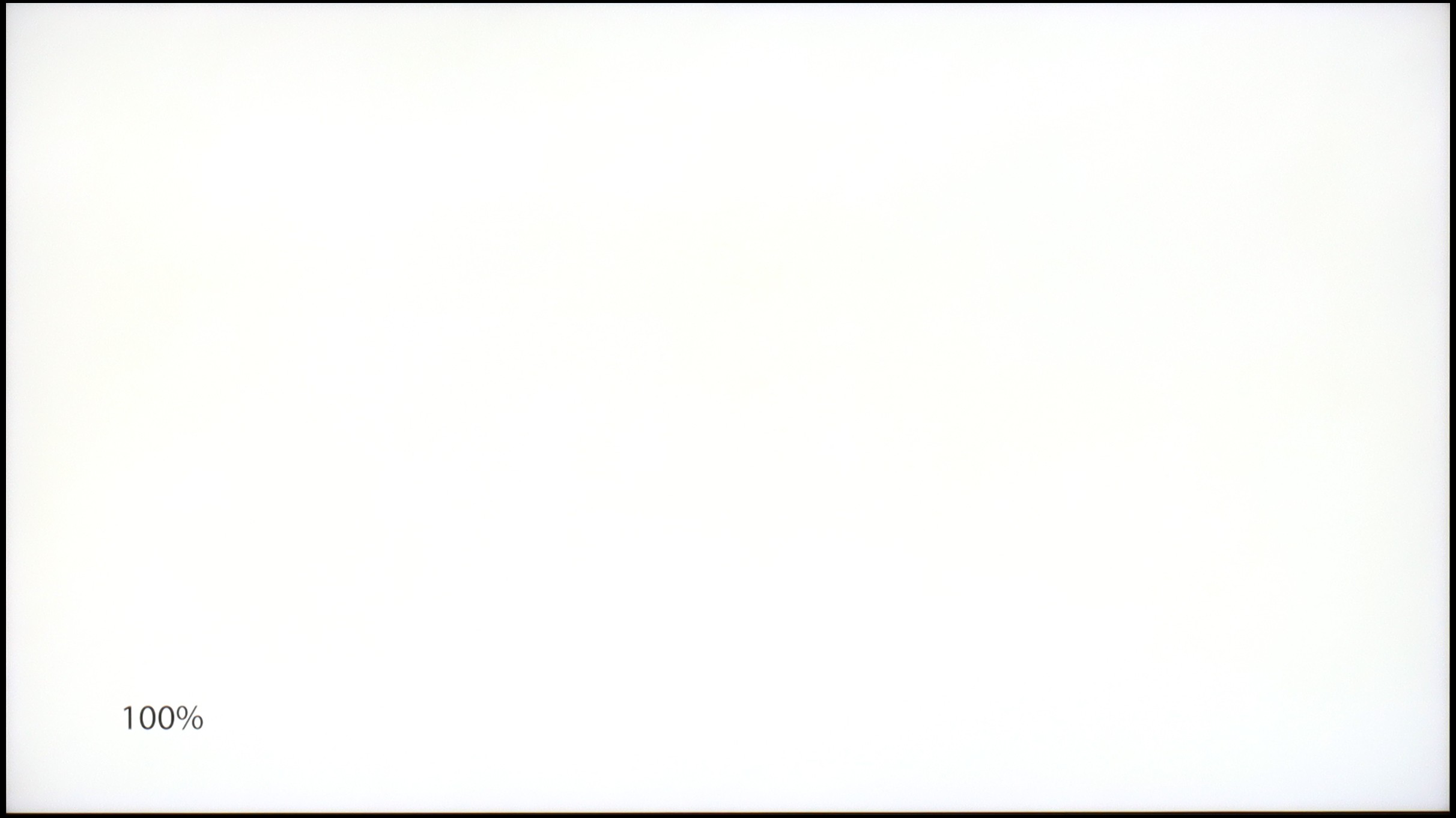
Sony Bravia 8 (XR80)
Samsung QN85F
TV features
9.4/10
7.3/10
- HDMI inputs2 x HDMI 2.0, 2 x HDMI 2.1 48Gbps0 x HDMI 2.0, 4 x HDMI 2.1 48Gbps
- OutputsToslink (Optical audio), eARC (HDMI), ARC (HDMI)Toslink (Optical audio), eARC (HDMI), ARC (HDMI)
- Network InterfacesWi-Fi 2.4GHz, Wi-Fi 5GHz, Ethernet (LAN) 100MbpsWi-Fi 2.4GHz, Wi-Fi 5GHz, Ethernet (LAN) 100Mbps
- TV receptionDVB-T, DVB-T2, DVB-S, DVB-S2, DVB-CDVB-T, DVB-T2, DVB-S, DVB-S2, DVB-C
Classic features:
- Recording to USB (terrestrial TV)
- Recording programming
- Picture in Picture (PiP)
- RF remote control (no need to aim at the screen)
- Backlit remote control
- Teletext
- Audio only mode
- Bluetooth headphones support
- Simultaneous Bluetooth headphones & TV audio
Smart features:
- AirPlay
- Screen mirroring (Windows Miracast)
- Voice search
- Voice search in native language
- Ability to connect a keyboard and mouse


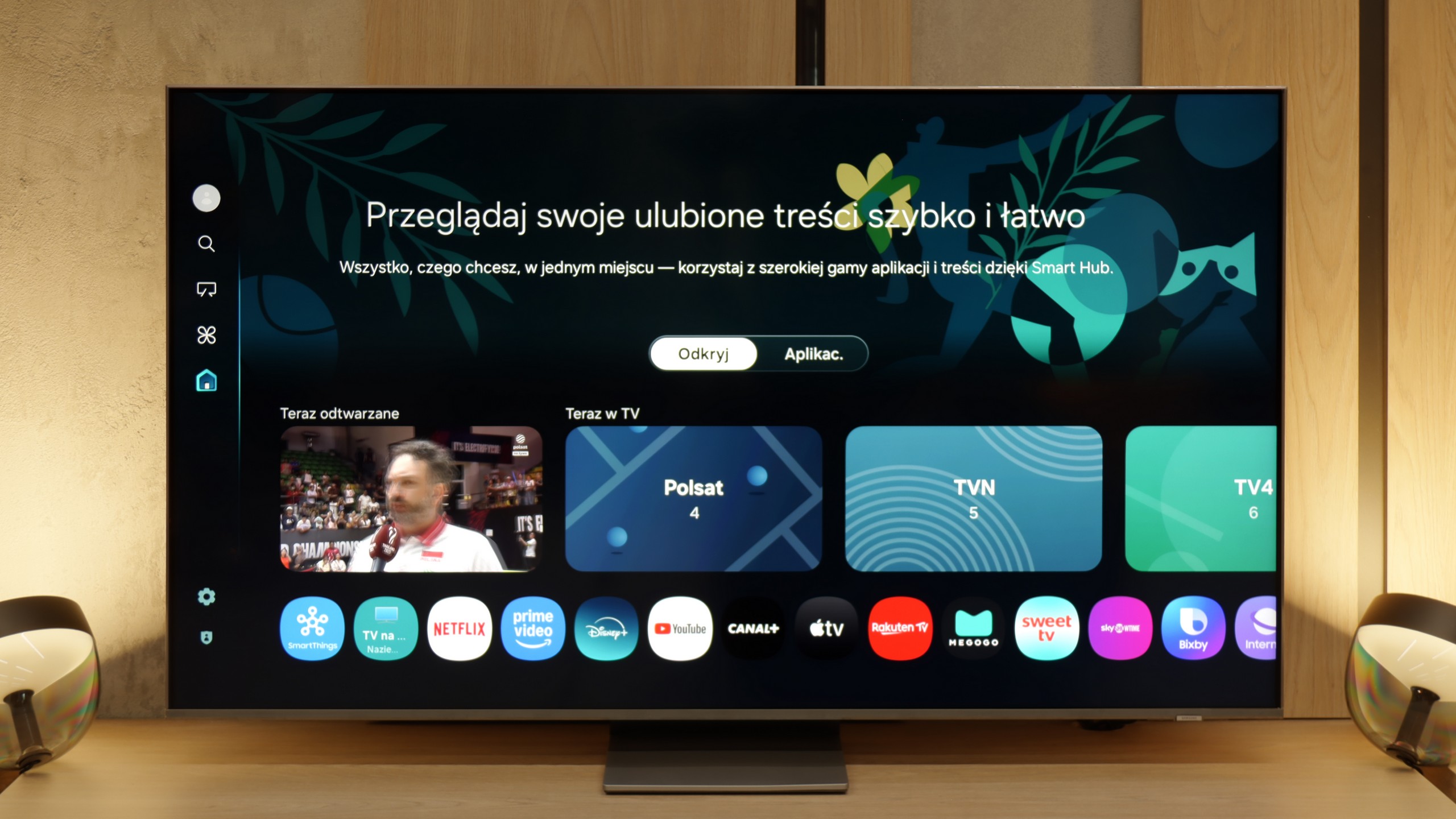
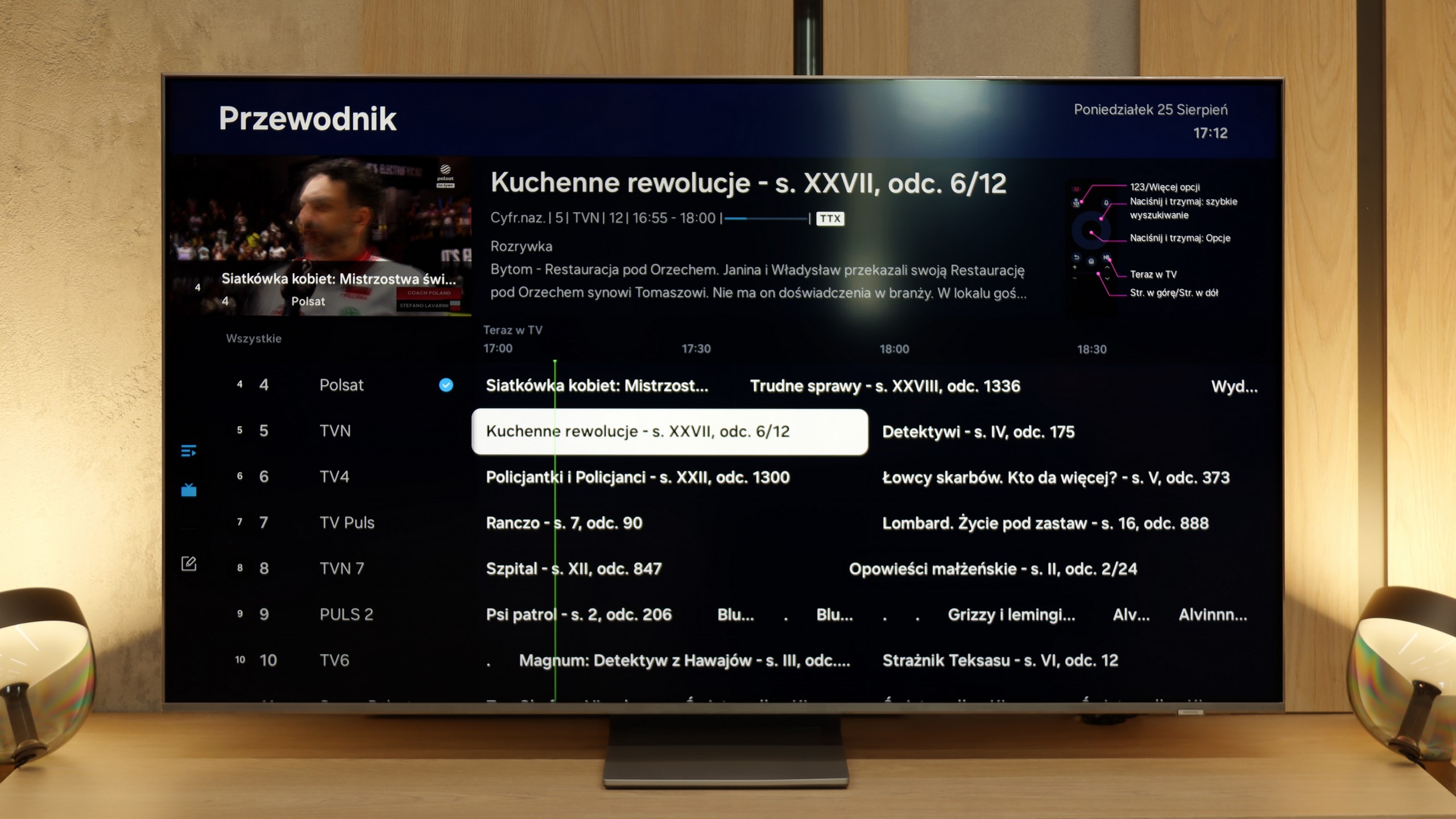
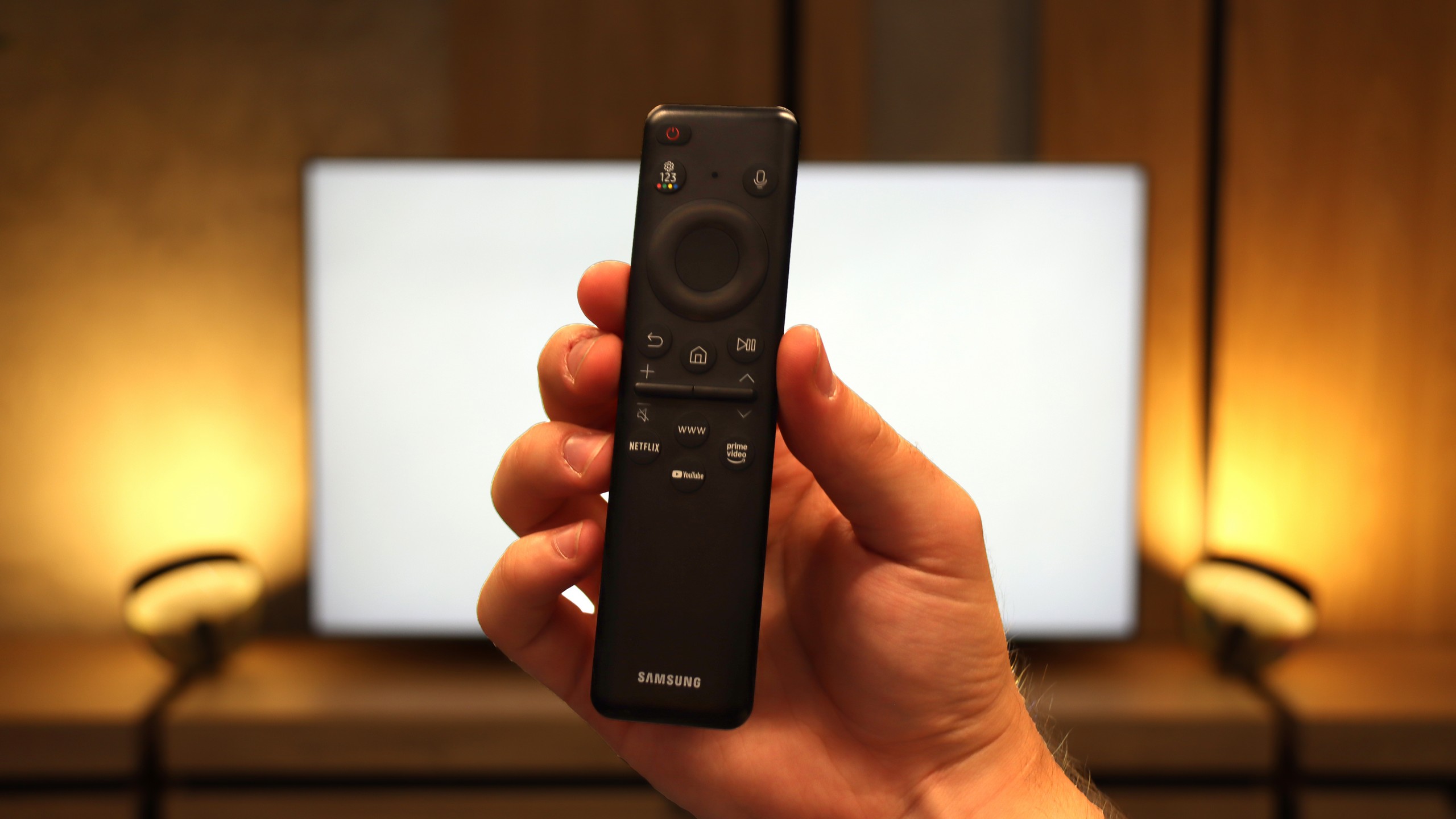
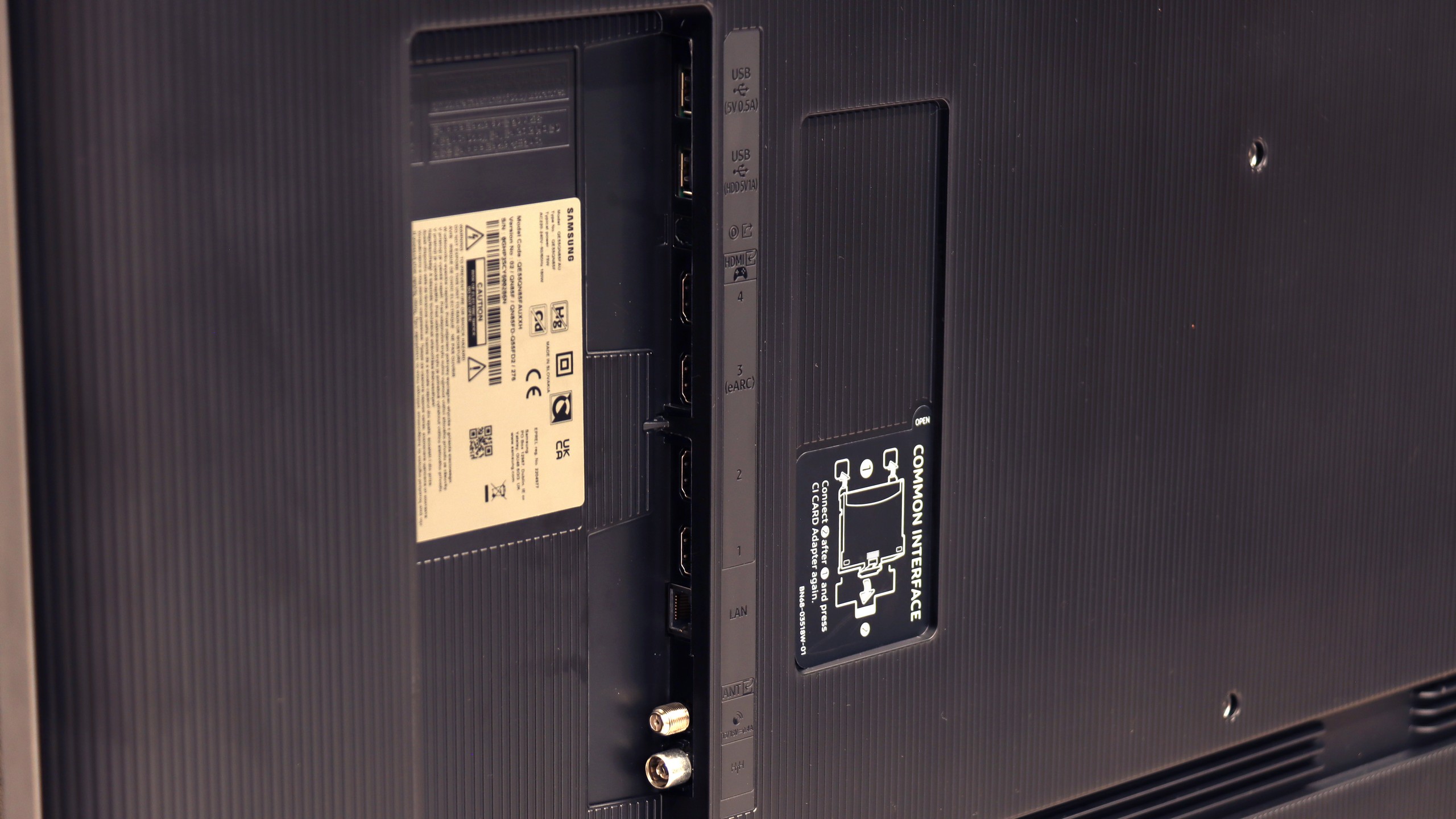
The Sony Bravia 8 runs on the Google TV system, offering an intuitive and user-friendly interface with access to an extensive range of applications. The interface is well-designed, with easy access to apps and features. The remote, similar to those from Korean competitors, can be charged via a USB-C port and is backlit, making it much easier to use in low-light conditions.
The TV provides a broad range of features that will satisfy most users. The Sony XR80 allows for program recording and easy connection to external devices via Bluetooth. However, it lacks the Picture-in-Picture (PiP) feature, which would enable simultaneous viewing of two image sources—a feature that could be useful in certain situations.
The design of the television is impressive, featuring a sturdy metal frame that adds an elegant touch. It stands on two adjustable feet, allowing for customisation of both width and height, making it easy to place a soundbar beneath the screen. While the Sony Bravia 8 is not the thinnest OLED on the market, its high-quality materials and meticulous finish ensure it presents well.
Smart TV and Tizen System
The Samsung QN85F runs on the proprietary Tizen operating system, which has been one of the strongest points of the Korean manufacturer for years. The platform operates quickly, is comprehensive, and provides access to virtually all necessary applications. We have AirPlay support, the ability to mirror the screen, voice search, and a very clear interface. Everything is controlled by a remote with a minimal number of buttons, designed to give us quick access to the most important applications.
Classic TV Features
When it comes to classic television functions, the QN85F offers a rather basic set. The EPG interface is readable and easy to use, resembling a traditional teletext program list. A downside is the lack of USB recording and the absence of PiP functionality, which Samsung offered in many other models. This is because the QN85F uses single tuners. For some people, this may be a drawback, but looking at how few viewers today use traditional linear television, it will not matter much for most users.
SmartThings and Device Support
A strong element of the entire platform is the SmartThings application. With it, we can integrate the television with other home devices—not just those from Samsung. We can connect Philips Hue or Yeelight smart lighting, video intercoms, and many other devices to the system. SmartThings also allows us to control the television without using the traditional remote— we can use the app on our smartphone, mouse mode, or gesture control if we have a Samsung smartwatch. This makes the QN85F part of a larger ecosystem and fits excellently into the trend of the IoT smart home.
Playing files from USB
8.7/10
9.1/10
Supported photo formats:
Maximum photo resolution:

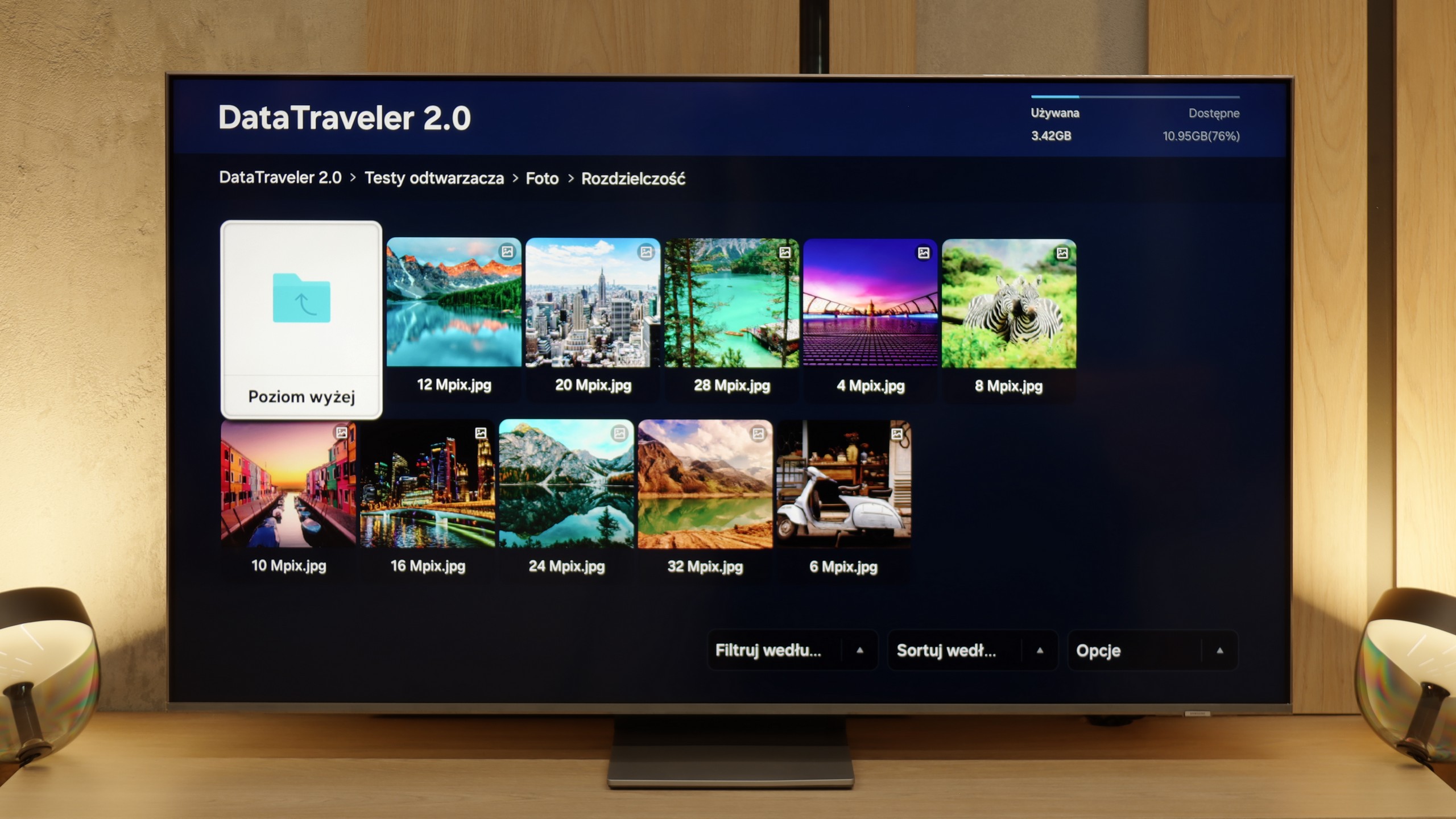
The Sony Bravia 8 will satisfy most users for multimedia playback. The built-in player supports the most popular video and audio formats, ensuring seamless access to a wide variety of content. While there are some limitations with photo playback, the Google TV system allows users to install alternative players that should address these issues.
The player in the QN85F works as most people expect, supporting virtually all popular formats and is sufficiently capable even for more demanding users. Movies, music, photos – everything launches without issues. The only hiccup occurs with HEIC files, which are images from Apple devices. According to the specifications, they should work, but in practice, they simply do not open. Thumbnails are visible, but the file itself refuses to launch. This seems to be just a regular software bug. Apart from that one case, the player performs well and gives no reasons for complaints.
Apps
9.6/10
8.7/10














































Sound
7.5/10
7.6/10
- Maximum volume-84dB
- Dolby Digital Plus 7.1
- Dolby True HD 7.1
- Dolby Atmos in Dolby Digital Plus (JOC)
- Dolby Atmos in Dolby True HD
- DTS:X in DTS-HD MA
- DTS-HD Master Audio
The Bravia 8 has a 50W sound system in a 2.2.1 configuration, featuring speakers mounted behind the screen under the Acoustic Surface Audio system. The sound is pleasant and well-balanced, perfectly complementing the image. In terms of audio format support, the Sony Bravia 8 performs excellently, playing all popular codecs without issues and delivering a rich, immersive audio experience.
The Samsung QN85F is equipped with a 2.2 system with a power of 40 W and performs really well for built-in speakers. The bass is pleasant, and the dialogues are clear and easy to hear even during louder scenes. Even at maximum volume, the television does not produce any unwanted vibrations, and nothing creaks. At the bottom of the housing, there is a subwoofer responsible for the bass, so it’s important to ensure that it is not obstructed during installation.
As for formats, the QN85F does not support DTS:X audio, which for Samsung has been a standard for several years now, forcing Blu-ray enthusiasts to connect audio devices first to the home theater and then to the television. In return, however, we get support for the more popular Dolby Atmos format, which can add extra space to the sound in movies and series.
Acoustic Measurements
No acoustic data
84dBC (Max)
75dBC


